September 21st, 2023
17minute read
September 15 marked the anniversary of the start to the Battle of Peleliu.
Spearheaded by the 1st Marine Division, Operation Stalemate II was to take less than a week.
forces suffered more than 10,000 casualties as the amphibious invasion stretched on for more than two months.
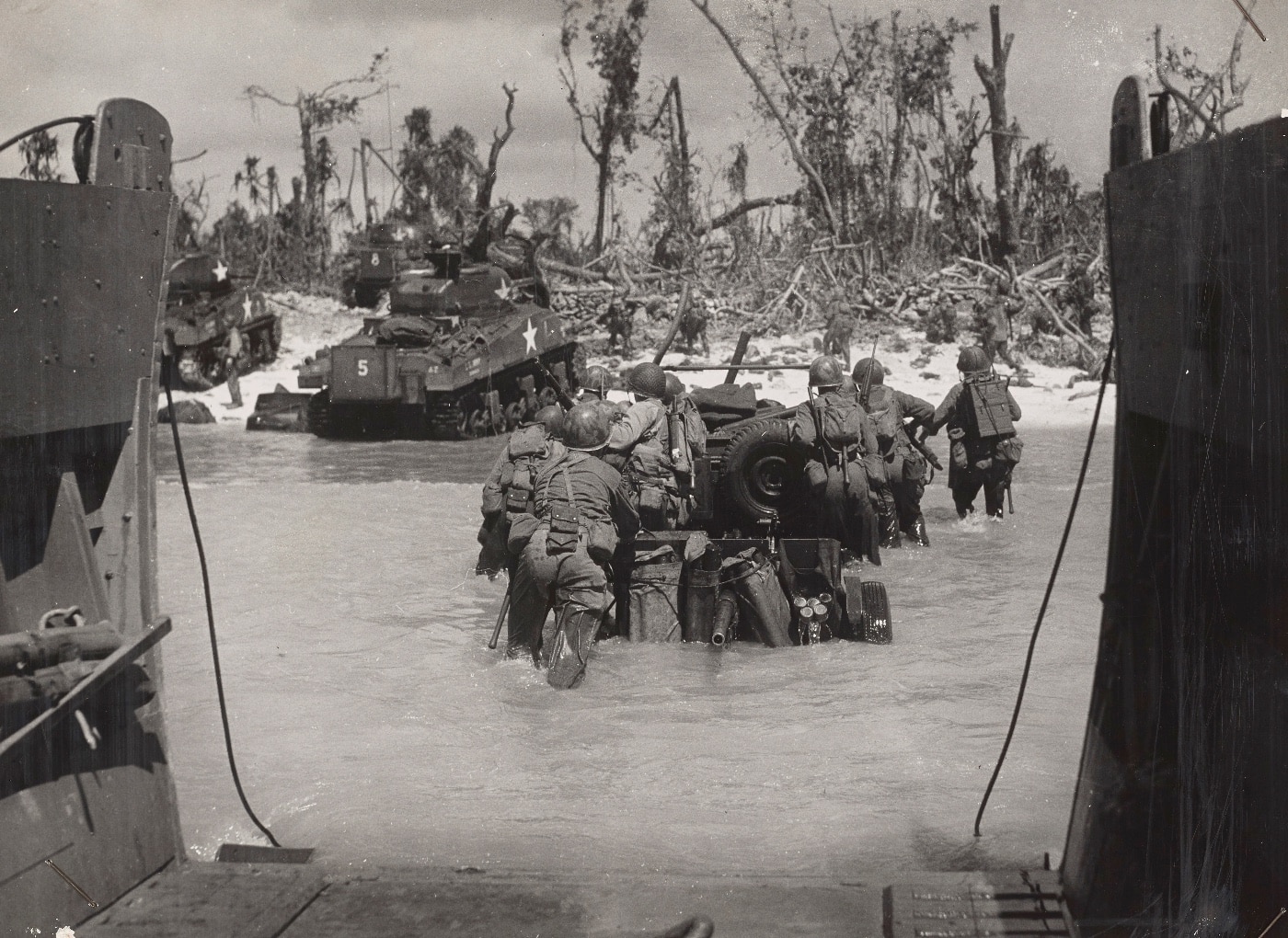
A jeep tows an anti-tank gun carried ashore in a Coast Guard-manned landing barge. On the beach, tanks move forward in pursuit of the Japanese who have fallen back inland. Image: U.S. Coast Guard
Like most newly minted Marines, I was forced by boot camp curriculum to become an amateur historian.
It was part of the drill.
Most of my fellow boots promptly forgot the gritty details when they left Parris Island or San Diego.
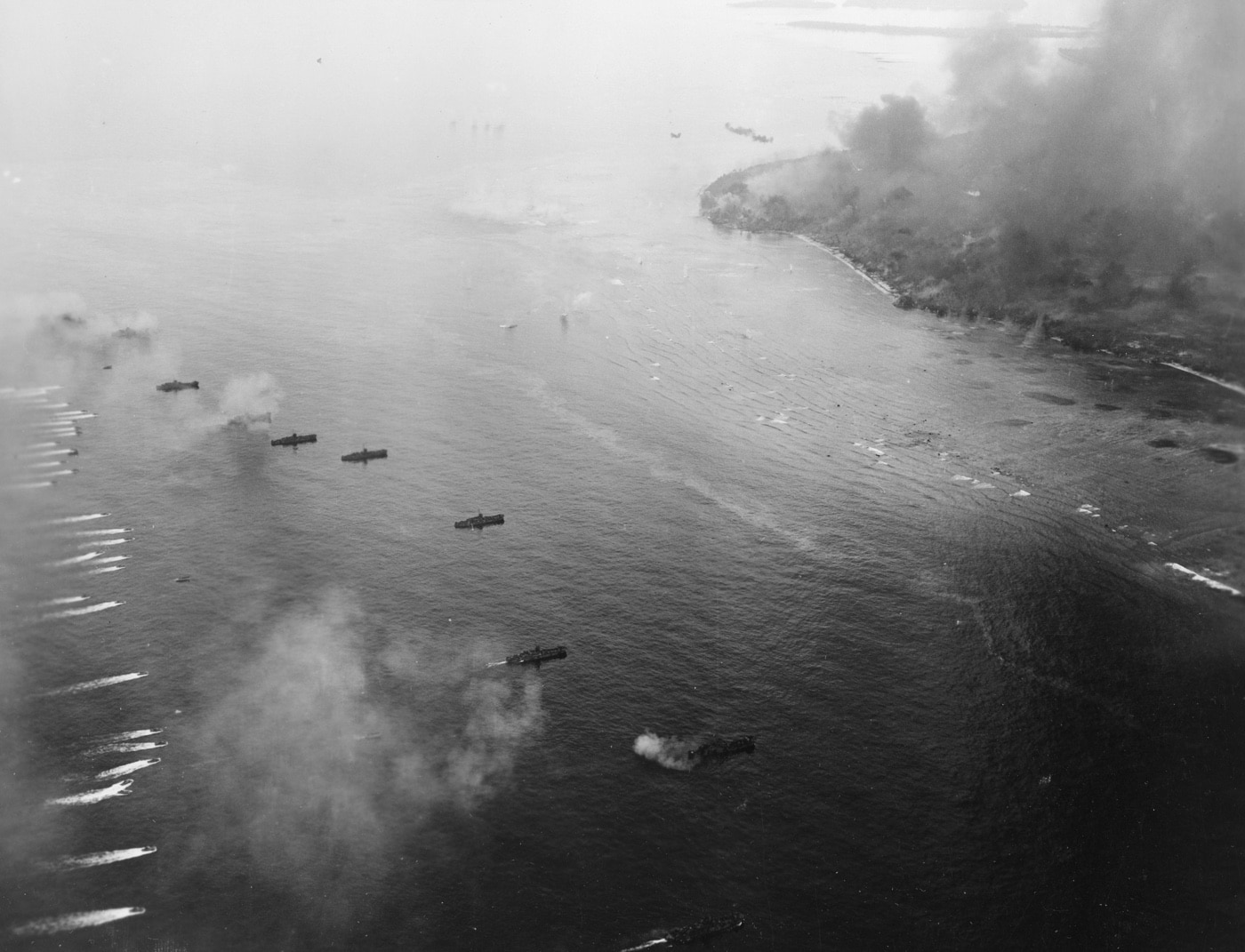
A line of landing craft filled with U.S. Marines spearheaded the attack on Peleliu Island. Image: NARA
What I thirsted for were insights, first-person accounts from PFCs in the rear ranks.
He served in the 1stMarines under the legendary Col. L.B.
He was salty and sagacious with a sharp memory for detail.

On September 15, 1944, the initial waves of men from the 1st Marine Division landed on Peleliu Island. The view hinted at the hell that awaited them. Image: NARA
Until I mentioned Peleliu.
The Master Gunny just shook his head.
Aint no way to describe it, the Master Gunny whispered.
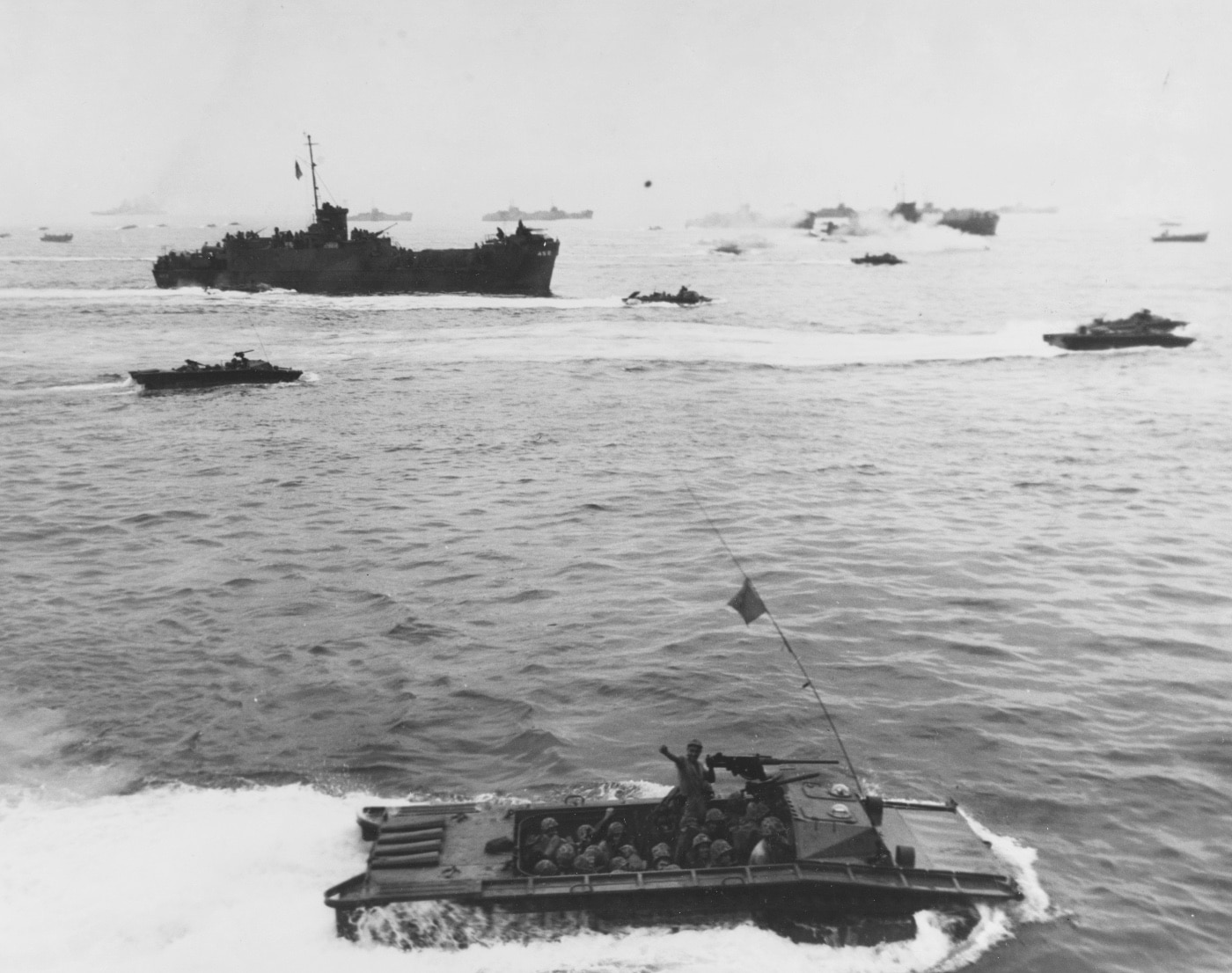
First Division Marines head for the beach, passing the offshore line of gunboats. The nearest LCIG is USSLCIG-452. The battleship USSIdahois in the left, far distance. Image: NARA
If you wasnt there on Peleliu, aint no way you could understand that rat-bastard of a fight.
By D plus four I wasnt no human being no more.
I fired at anything that moved in front of me.
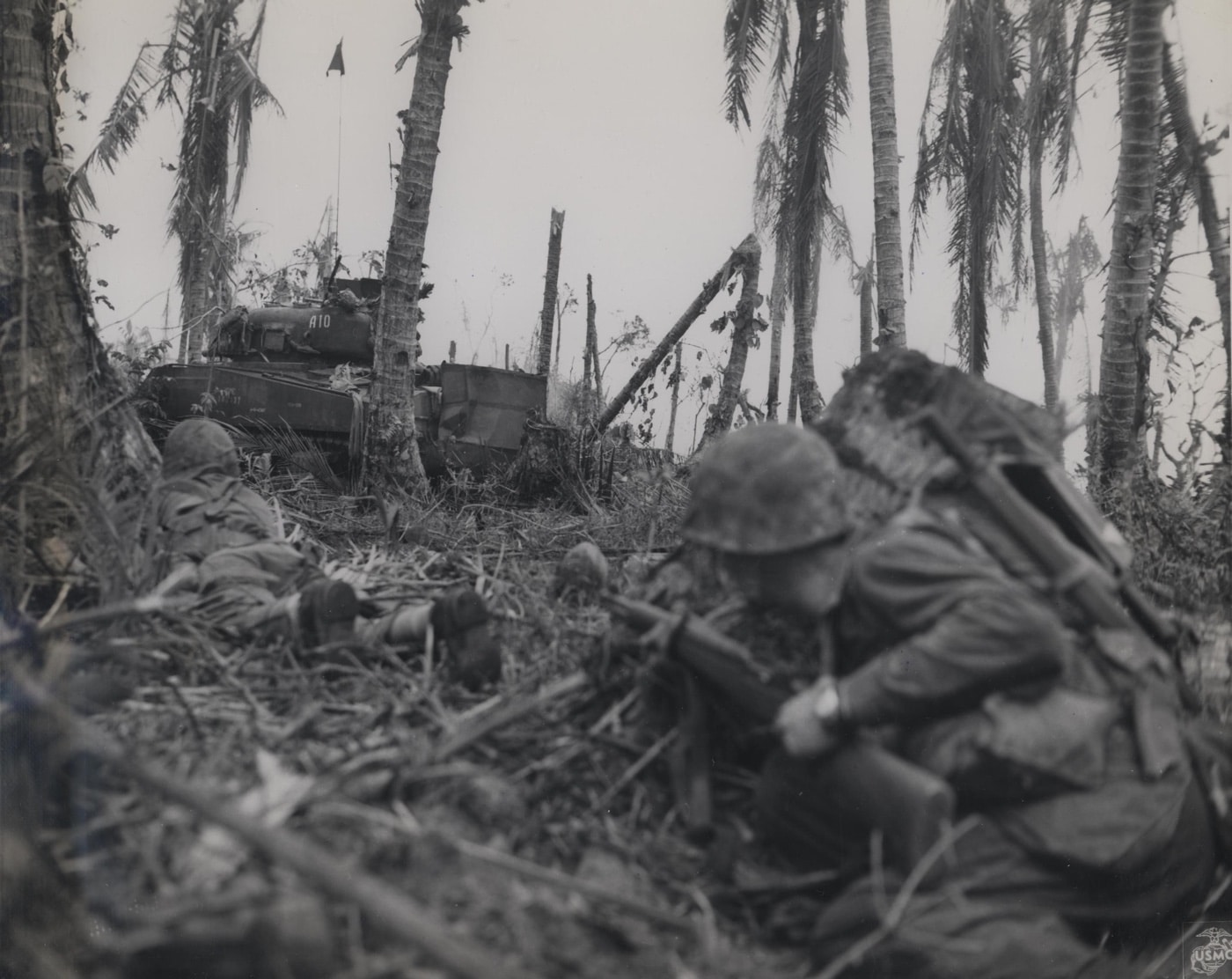
After the beachhead had been established on Peleliu, Marine infantrymen inch ahead on their bellies to support their tanks attacking Japanese strong points. Image: U.S.M.C./CC BY 2.0
I just wanted to kill.
The Palau group is in the Micronesia area of the Western Pacific.
Its an archipelago of some 500 large and small islands.
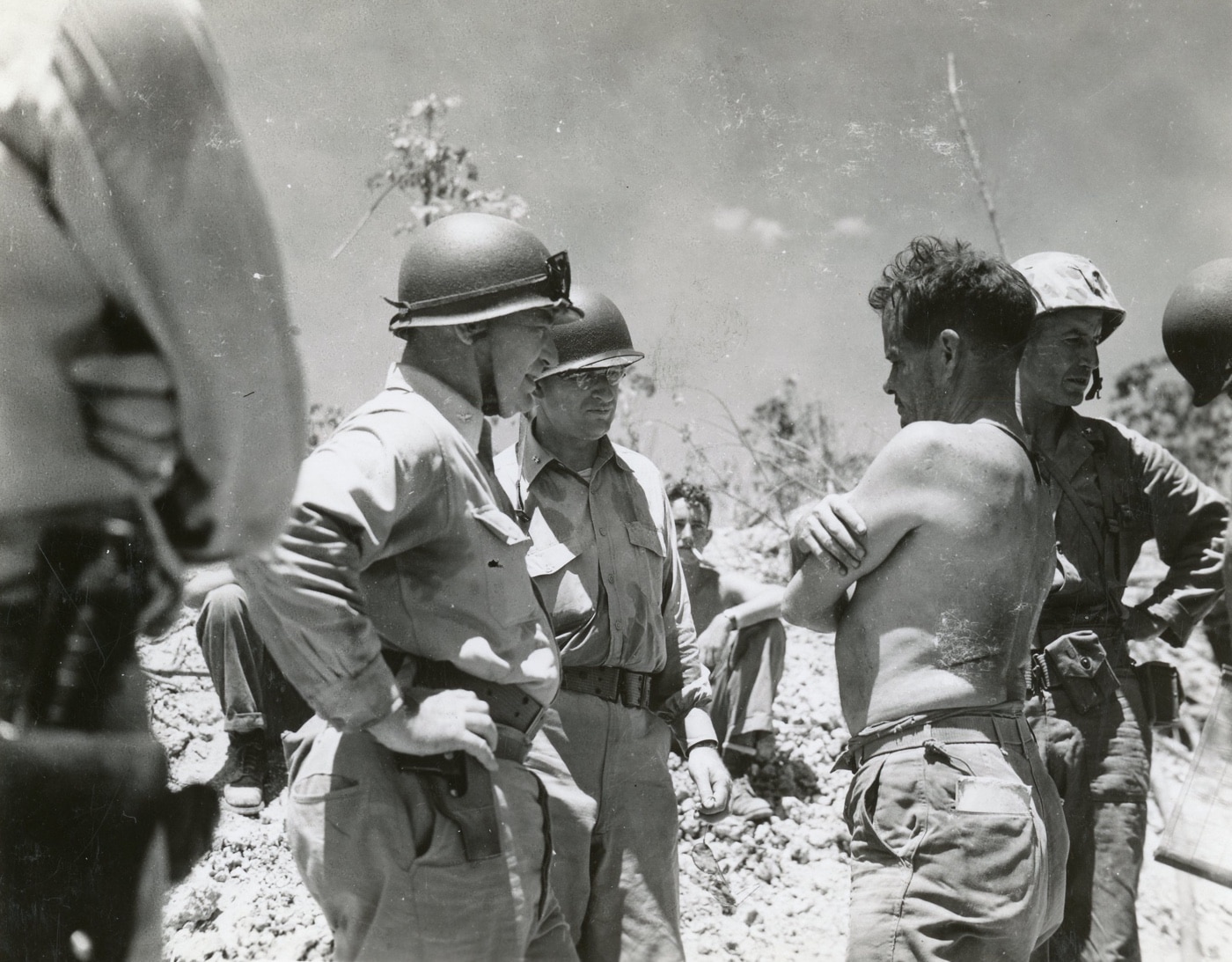
A flag officer and his staff talk to shirtless Col. Lewis B. “Chesty” Puller during the Battle of Peleliu. Puller, a Marine, believed in leading by example and endured the same hardships as his men. Image: NARA
Halsey had been sailing his 3rdFleet throughout the southern Philippines area, launching repeated air strikes from his carriers.
He became convinced that the PI was not as heavily defended as planners anticipated.
Nimitz decided to proceed with Stalemate II, moving D-Day eight days later than originally planned to 15 September.
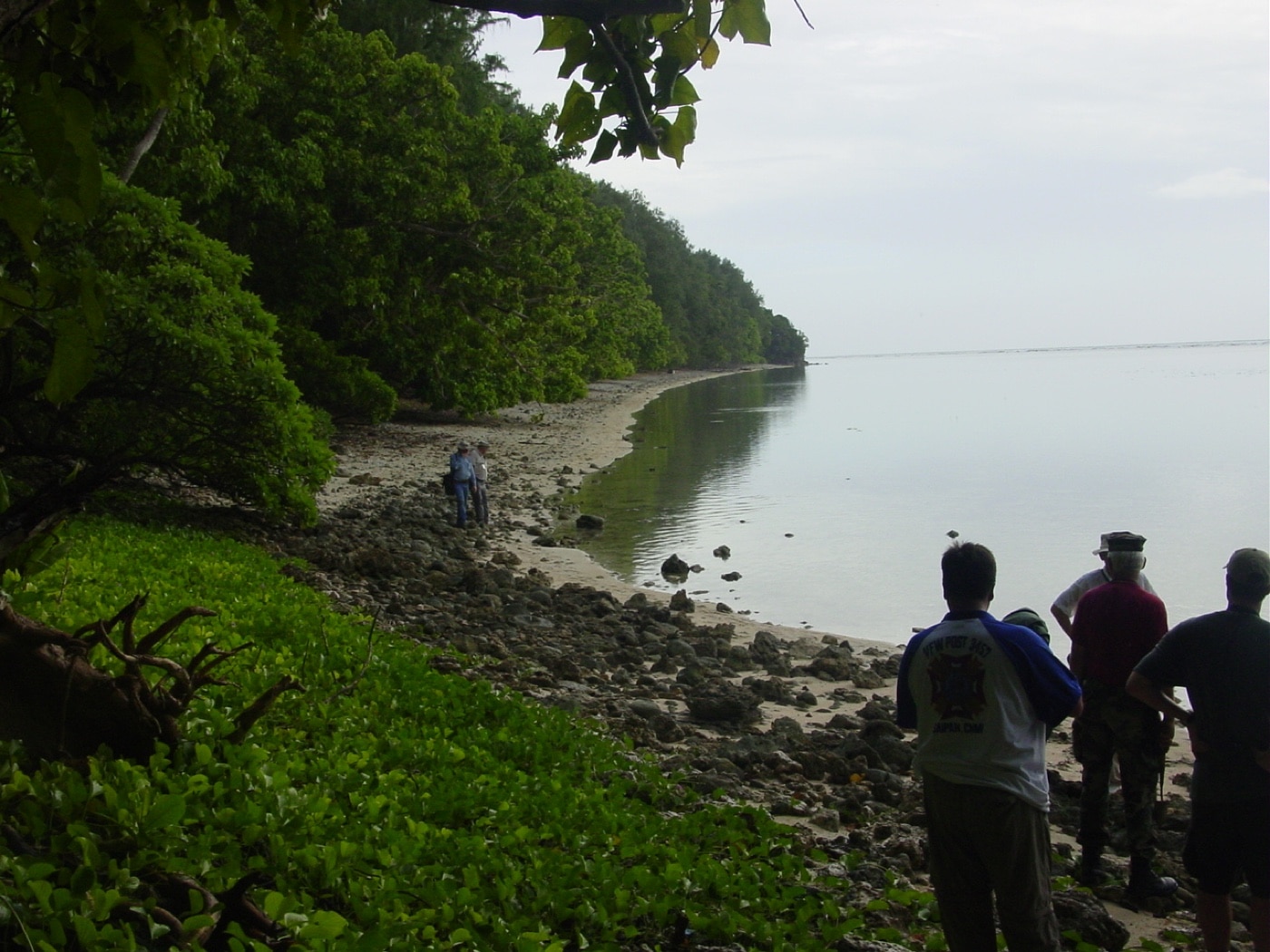
A modern view down the length of White Beach 1 on Peleliu. In September 1944, the beaches were deeper and most of the vegetation had been blown away by pre-assault naval gunfire.
Finding Footing
From the air, Peleliu most resembles a big lobster claw with pincers pointed northeast.
The 1stMarines (Puller) would land on the left flank over White Beaches 1 and 2.
The 5thMarines (Col. Bucky Harris) would land in the center sector over Orange Beaches 1 and 2.
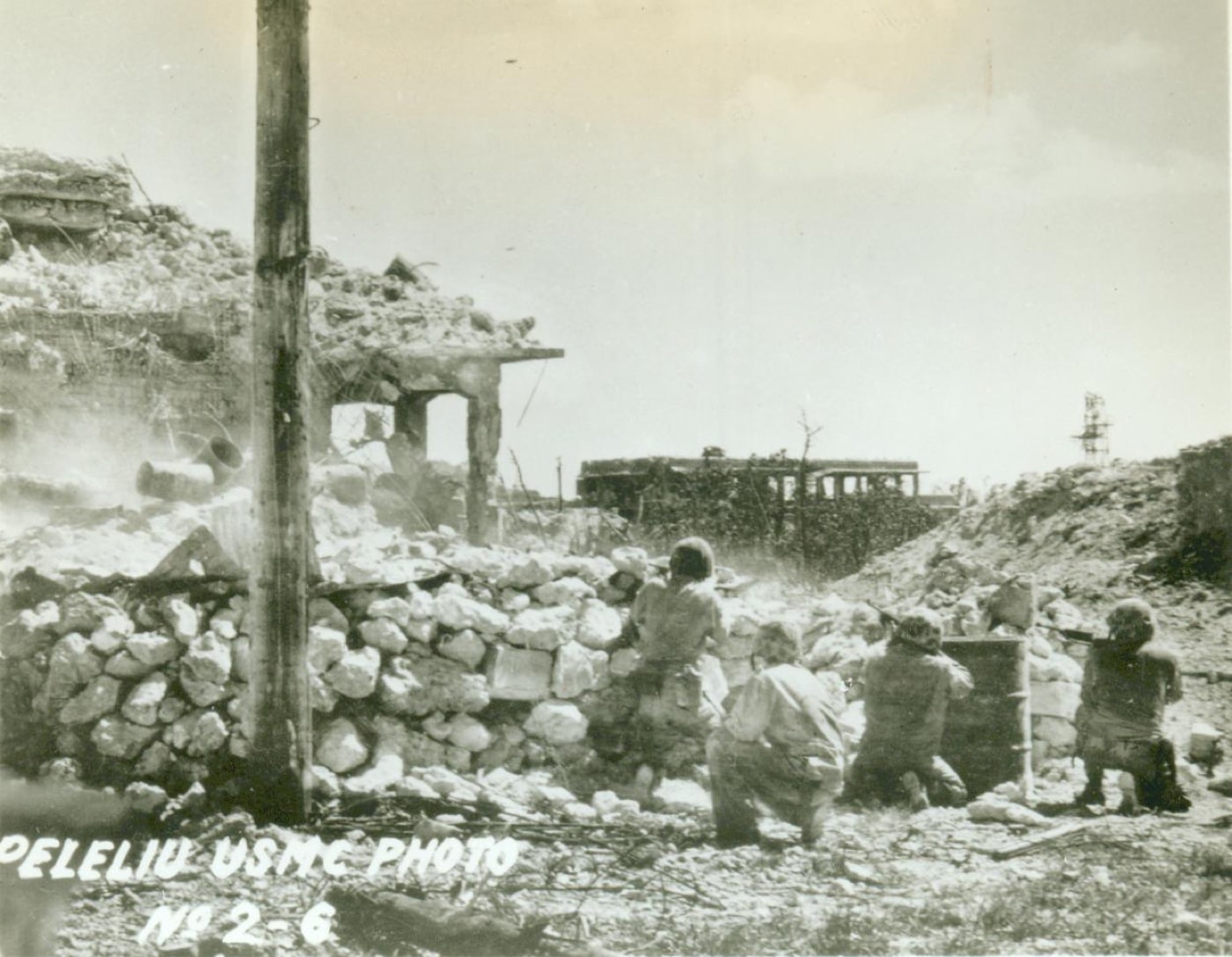
Marines engage Japanese defenders in intense fighting around the primary airfield on Peleliu Island. Image: U.S.M.C./CC BY 2.0
The 7thMarines (Col. Herman Hanneken) were on the right flank landing over Orange Beach 3.
The basic scheme of maneuver was simple and fairly straightforward.
As usual, the Marines would find it much simpler said than done.

The defenders’ view of Orange Beach 3 on Peleliu Island. Col. Herman Hanneken’s 7th Marines came ashore here.
It was a memory that brought shudders to my friend the Master Gunny when he talked about it.
I wanted to stand on that ground where K/3/1 had nearly been wiped out on D-Day in September 1944.
In 1944, it was honeycombed with Japanese caves, firing points, defensive blockhouses and pillboxes.
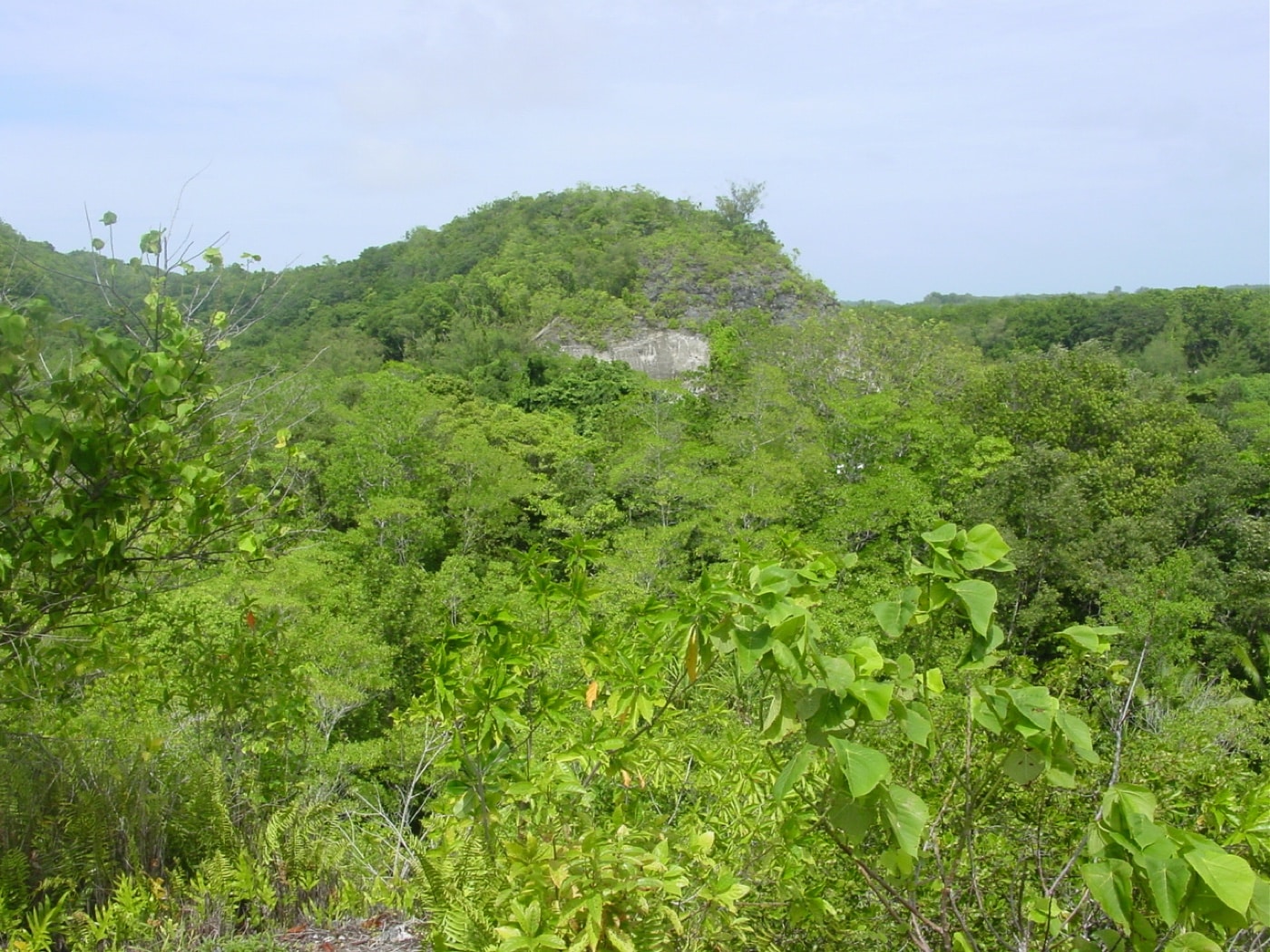
Baldy Ridge was a fortified position at the mouth of the Umurbrogol Pocket. This position had to be reduced before the full press on Japanese forces could begin in earnest.
By D+14 Marine aircraft, primarily F-4U Corsairs, were operating from Pelelius captured airfield.
Back on Peleliu, it was low tide when we ducked into a large cave in the Umurbrogol foothills.
Marine demolition squads were in heavy demand on Peleliu armed with satchel charges and backed by flamethrowers.
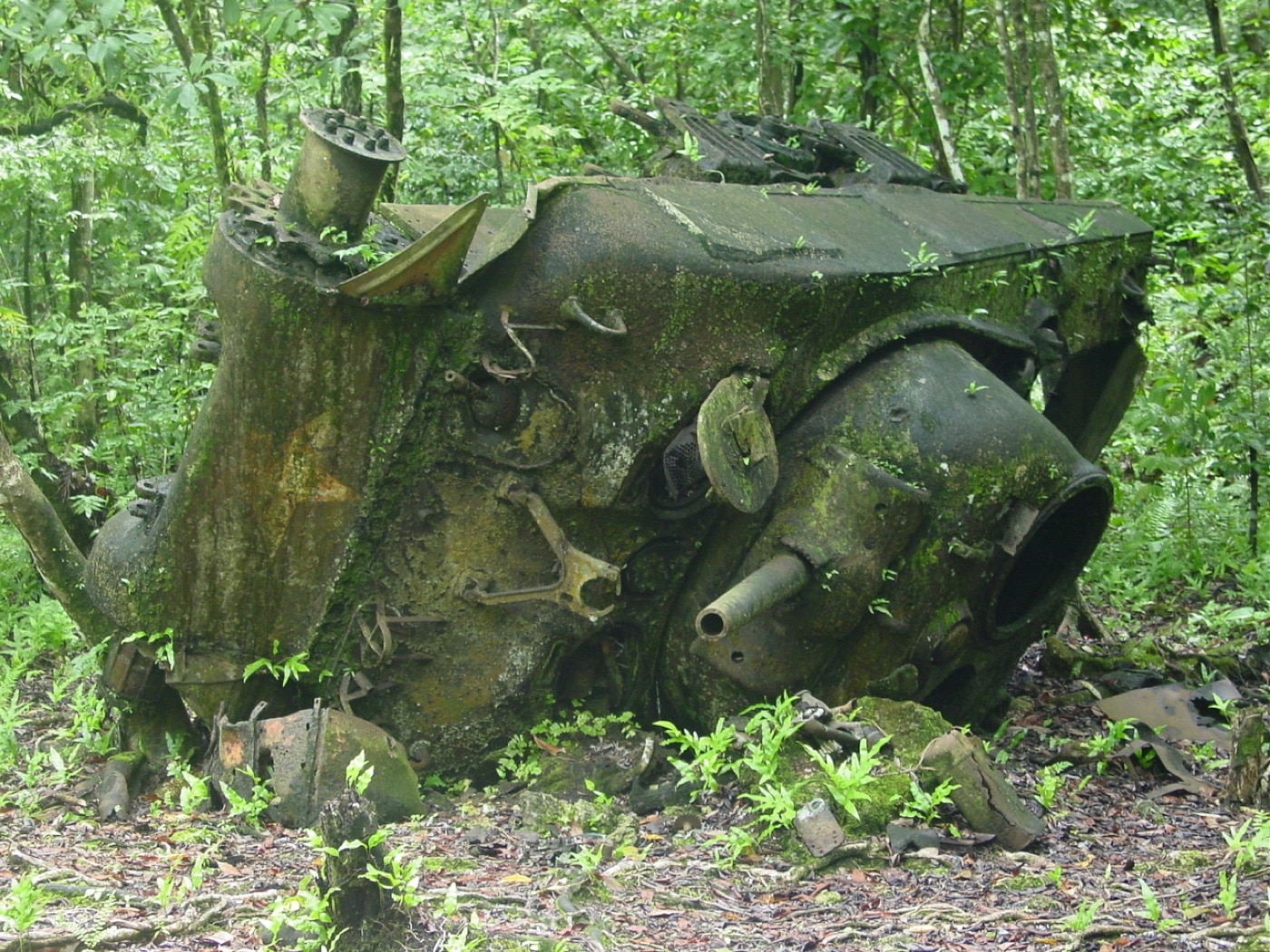
The remains of a Sherman tank used in the assault on positions in Death Valley, a Japanese strongpoint in the Umurbrogol Pocket on Peleliu. Damage indicates the vehicle was destroyed by an anti-tank mine.
High-angle fire from standard mortars or howitzers was less effective against coral and concrete reinforced positions.
And there were hundreds of those on Peleliu.
Most of the caves we explored were similar.
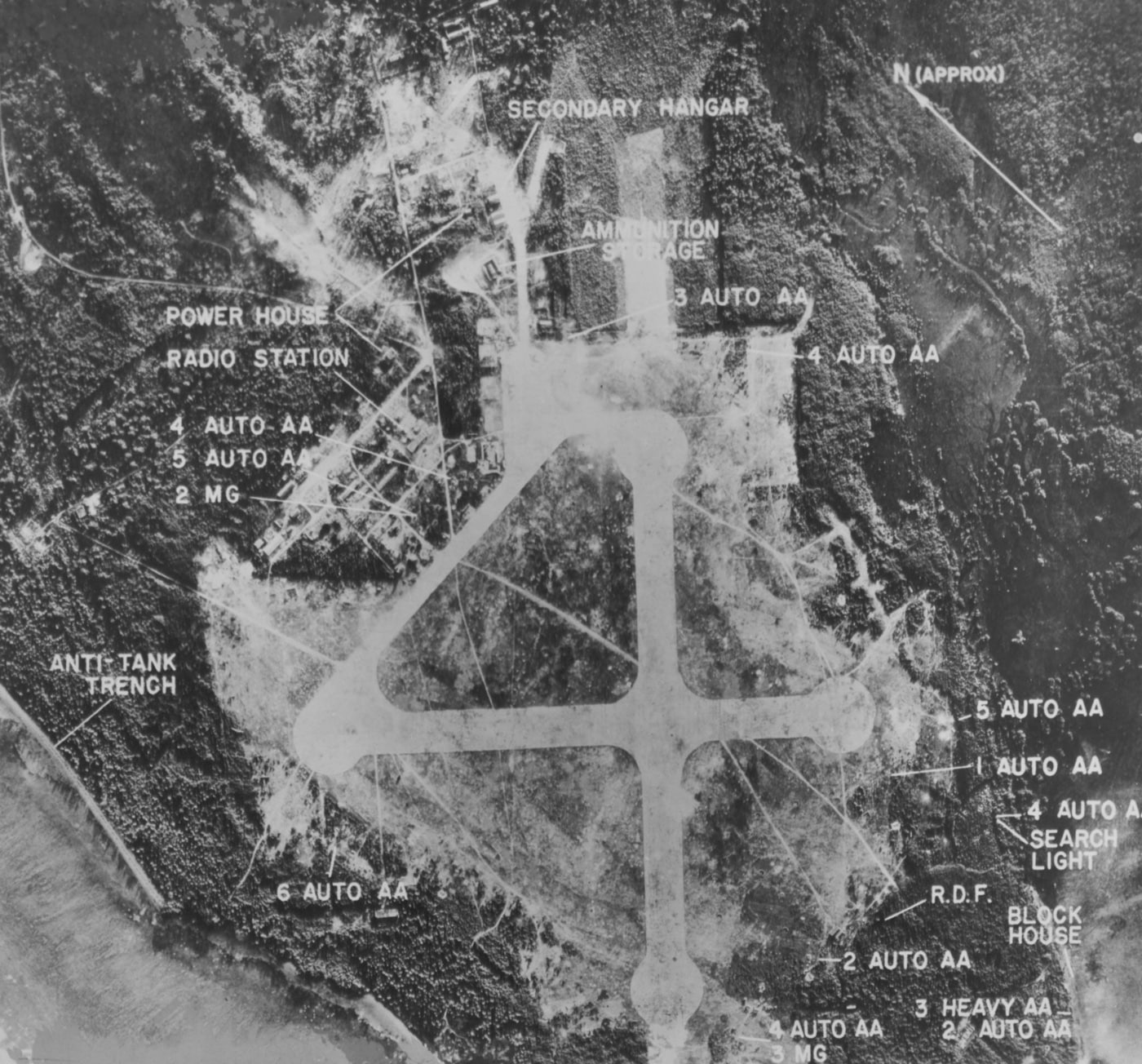
First prize at Peleliu Island was this heavily fortified airfield. Marines captured it during the second day’s fighting. This annotated photo shows important defensive positions. Image: NARA
Native Palauans dont mess with this stuff for the most part.
After-action reports note American surprise at the lack of fanatical banzai charges on Peleliu.
How did anyone survive?
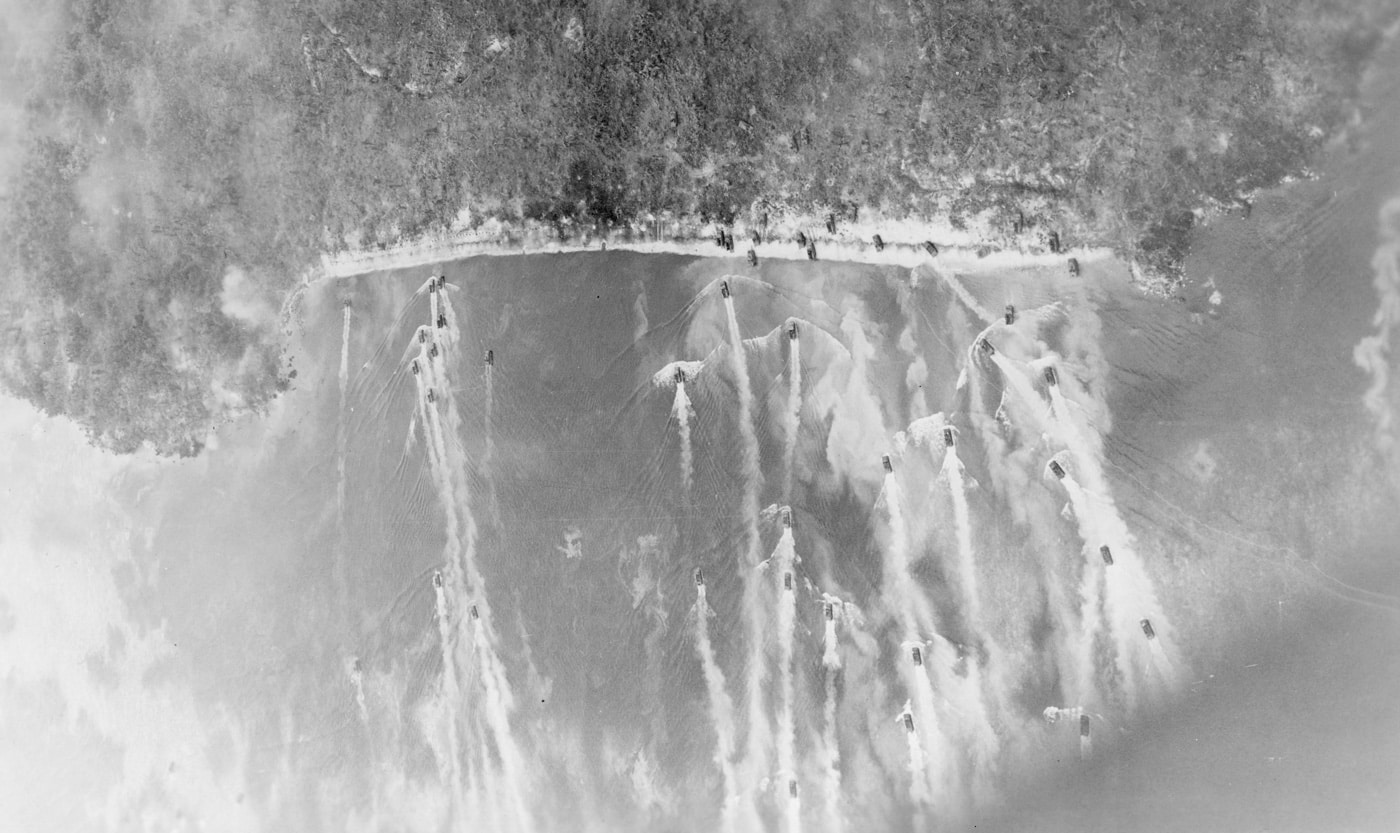
A line of landing craft spearheaded the 1st Marine Division’s assault of Peleliu Island. Image: NARA
Truthfully, way too many did not.
The Armys 81stDivision lost 1,393 on Peleliu and another 260 killed on Angaur.
Only 202 prisoners were taken on Peleliu, and of those, only 19 were Japanese.
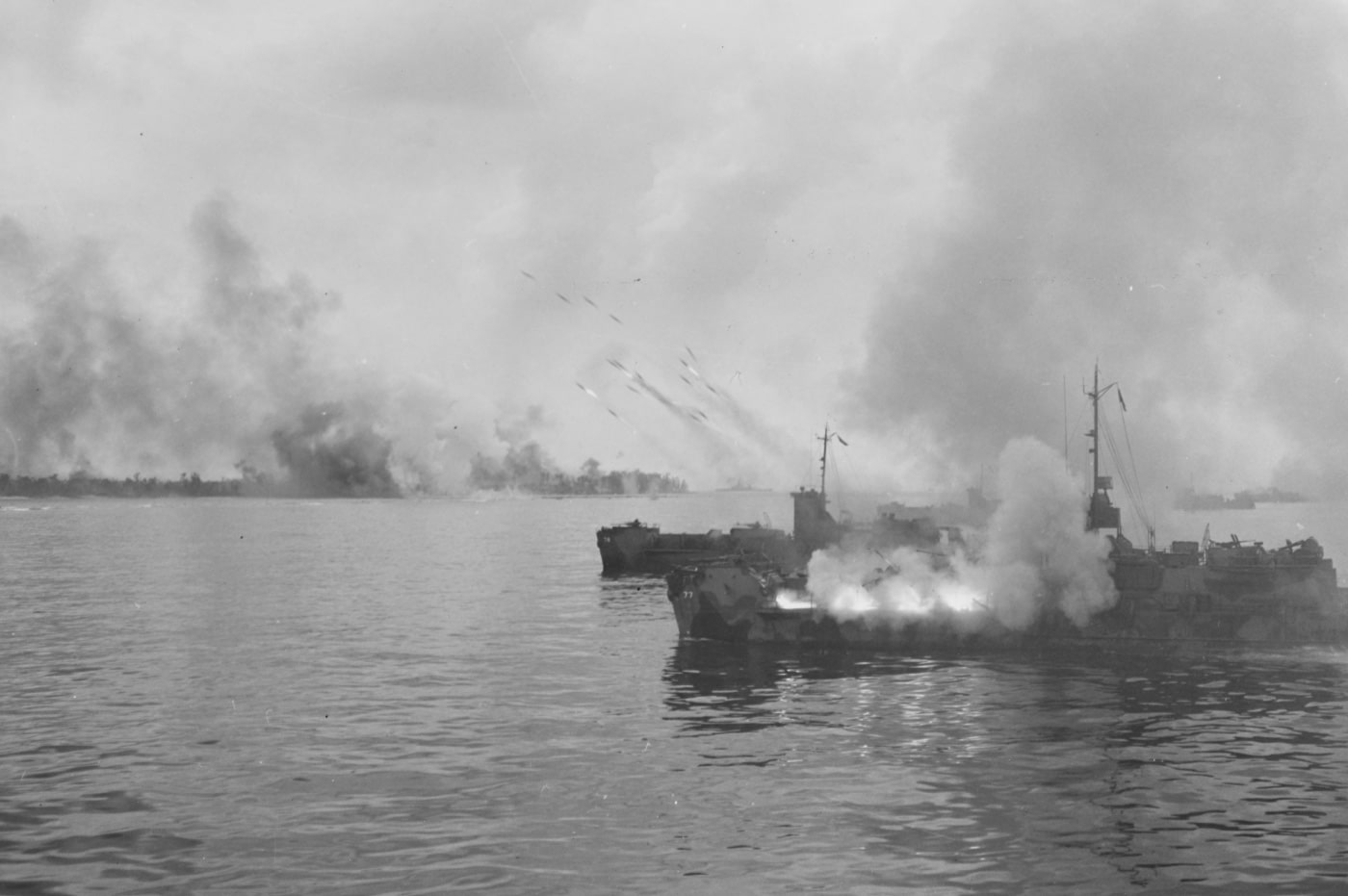
The naval bombardment of Peleliu included rocket attacks against the beaches by the landing craft prior to the 1st Marine Division’s assault. Image: U.S. Navy
The rest were Korean or Okinawan laborers.
He died of a heart attack before the war ended.
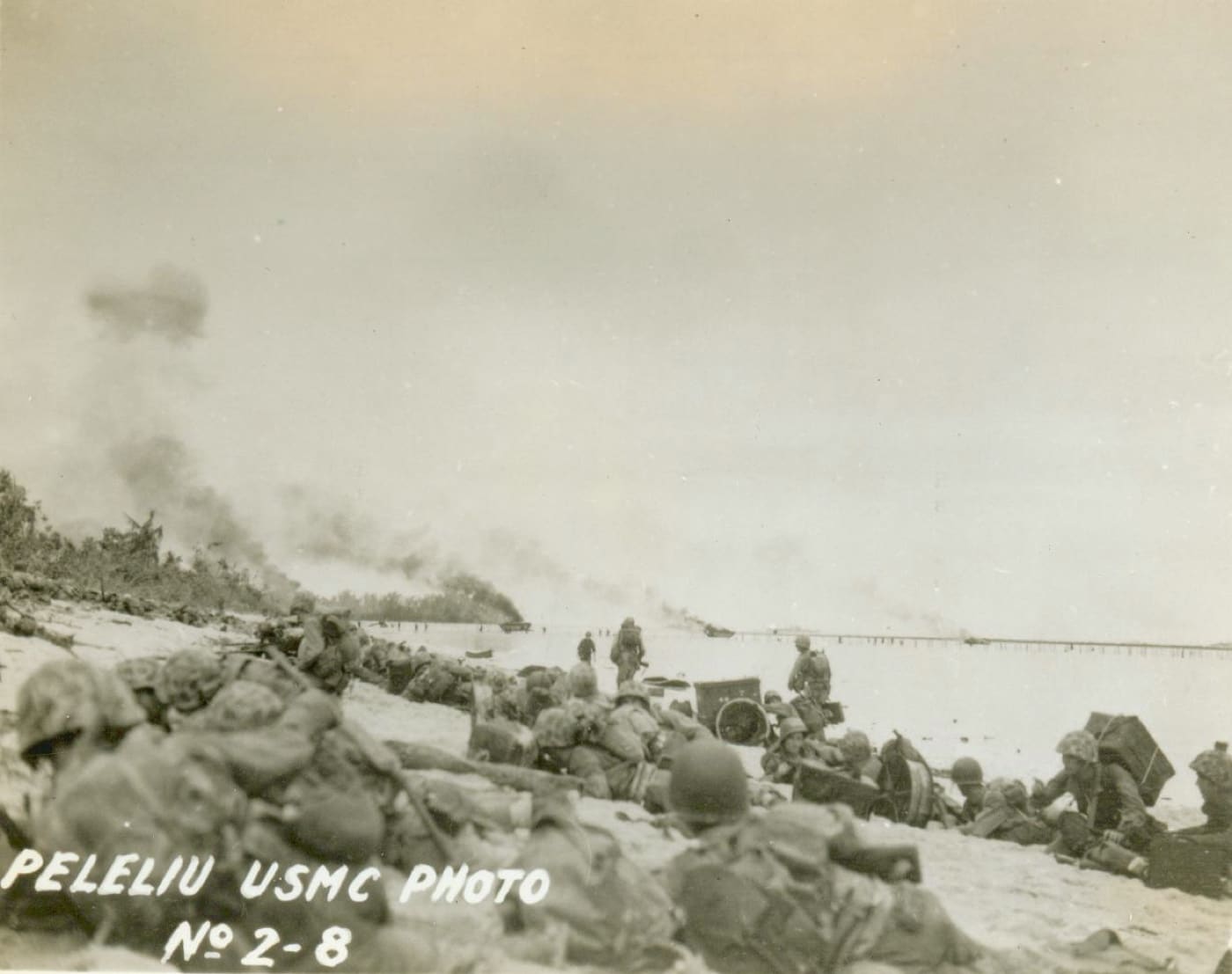
Marines move up the beach on D-Day. The Battle of Peleliu was one of the toughest of the Pacific War. Image: U.S.M.C./CC BY 2.0
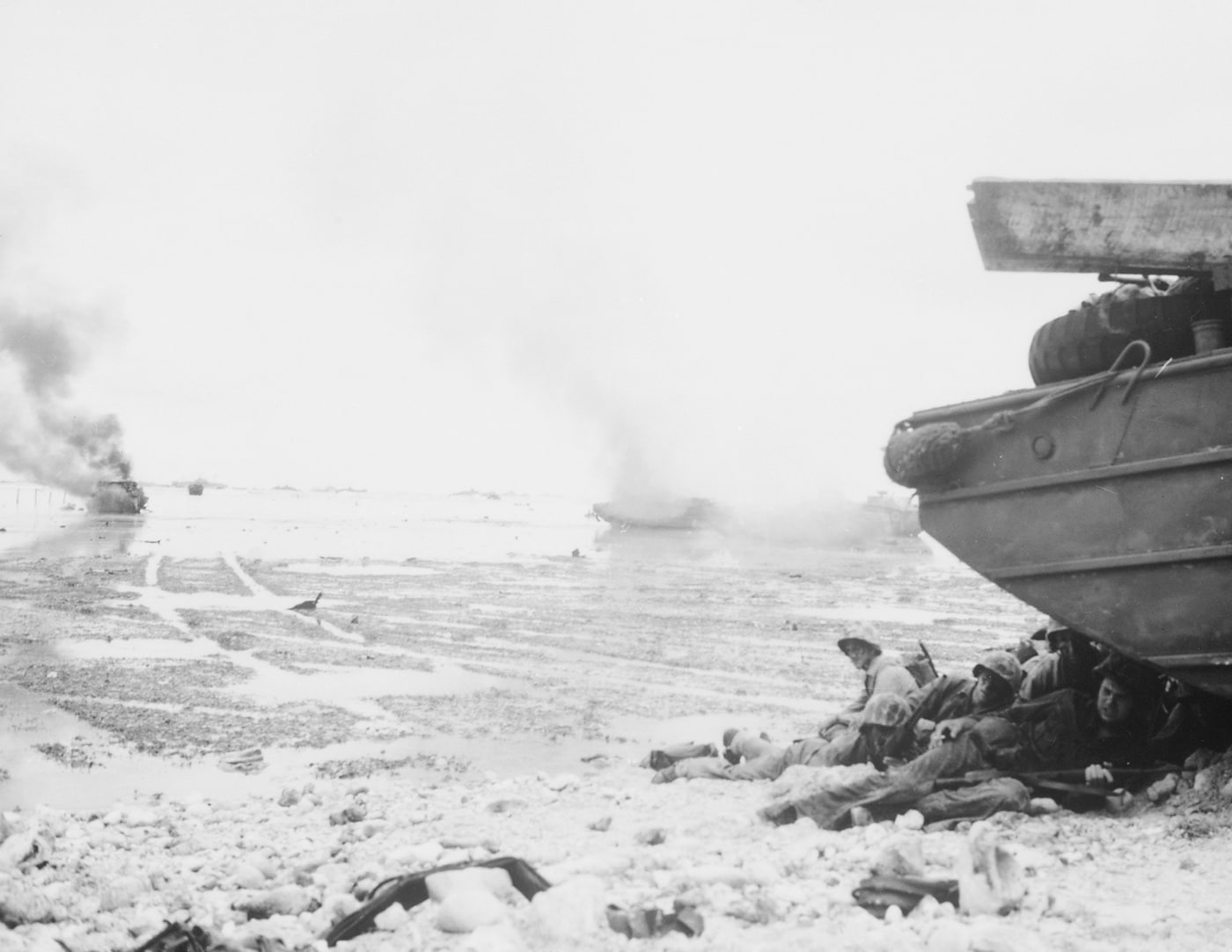
Several Marines take cover from the withering Japanese fire under a DUKW. An amphibious tractor burns on the beach in the background. Image: NARA
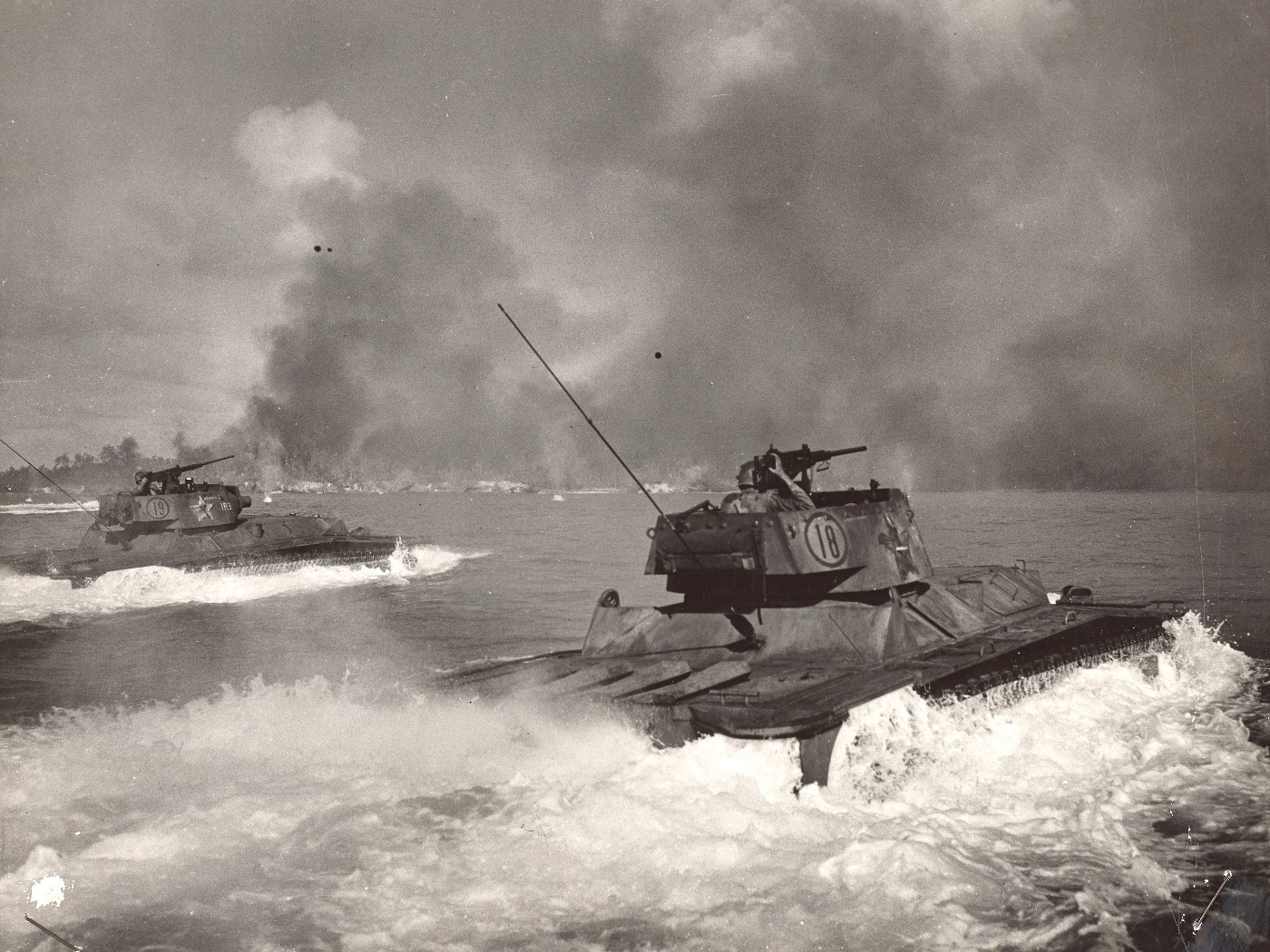
Two amphibious tanks race toward the shore during the beach assault. Image: U.S. Coast Guard
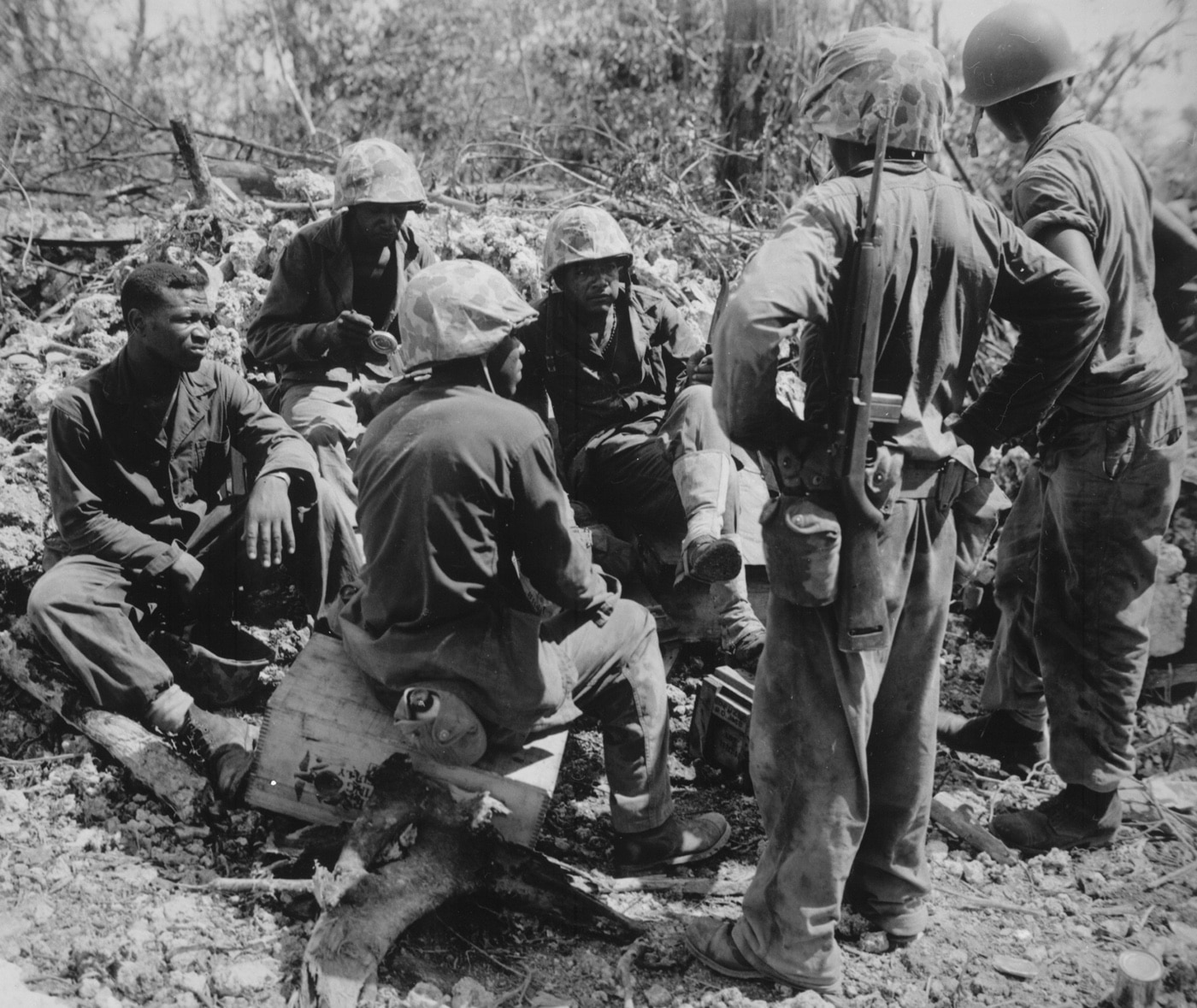
The U.S. Navy Seabees (Construction Batallion) worked as stretcher bearers for the 7th Marines during combat on Peleliu. Image: NARA

ThisMarine LVT-4was abandoned on Ngesebus nearly intact with two M-1919 .30 caliber machine guns mounted on the hull. Attached to Peleliu by a causeway, Ngesebus held a secondary airfield and artillery.

During the fight for Peleliu, Marines would get their amphibious tractors into action against hardened positions whenever possible. This one assaults a Japanese pillbox with a flamethrower. Image: NARA
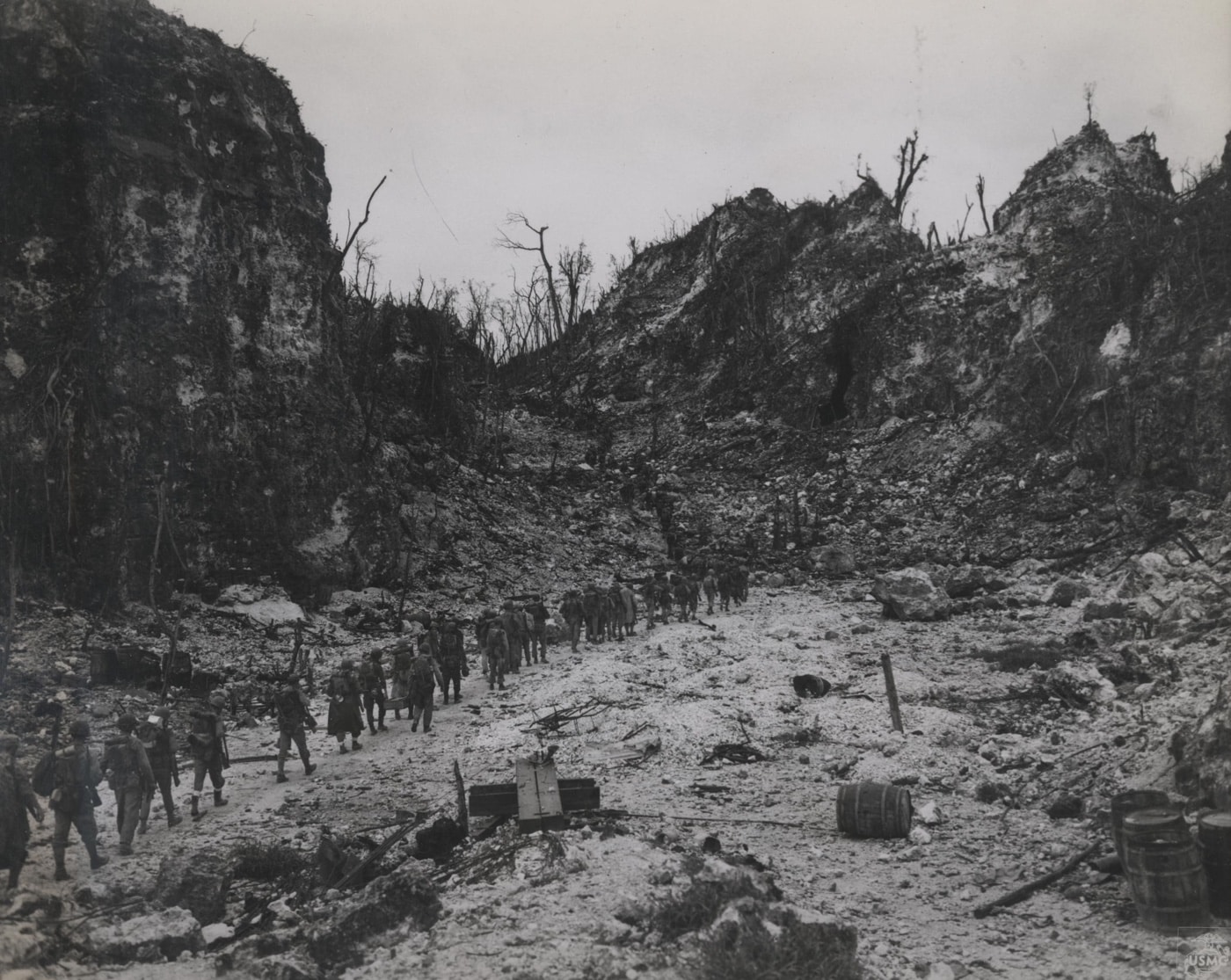
Picking their way through the rocky terrain on Peleliu, a column of Marines moves up to the front lines. This terrain was typical for the Leathernecks battling the Japanese forces. Image: U.S.M.C./CC BY 2.0
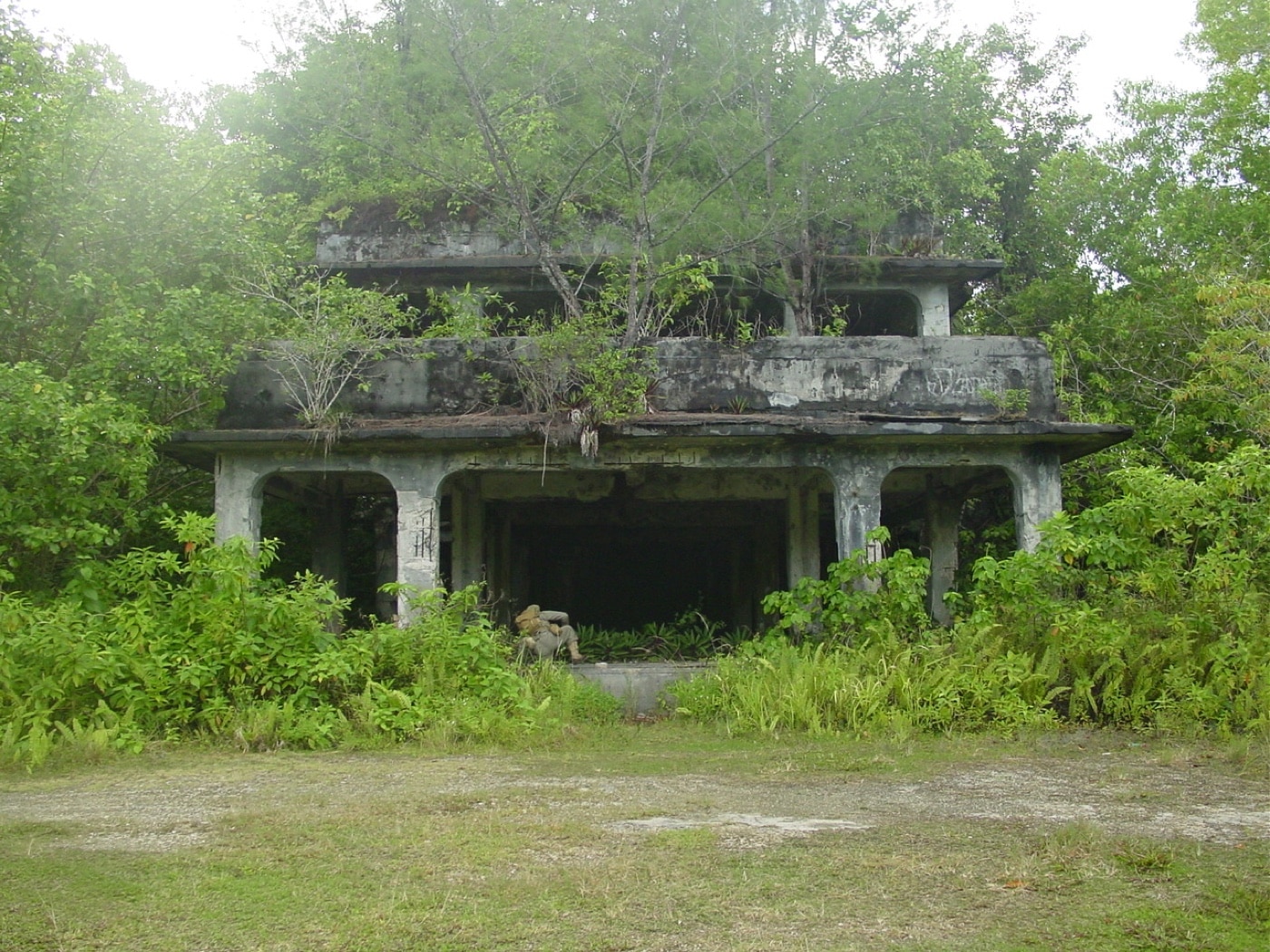
This is the original building that housed the Japanese command staff on Peleliu before the officers were forced to relocate to a cave complex.

Marines supported by tanks assault Japanese positions on Peleliu in October 1944. Image: U.S. Marine Corps
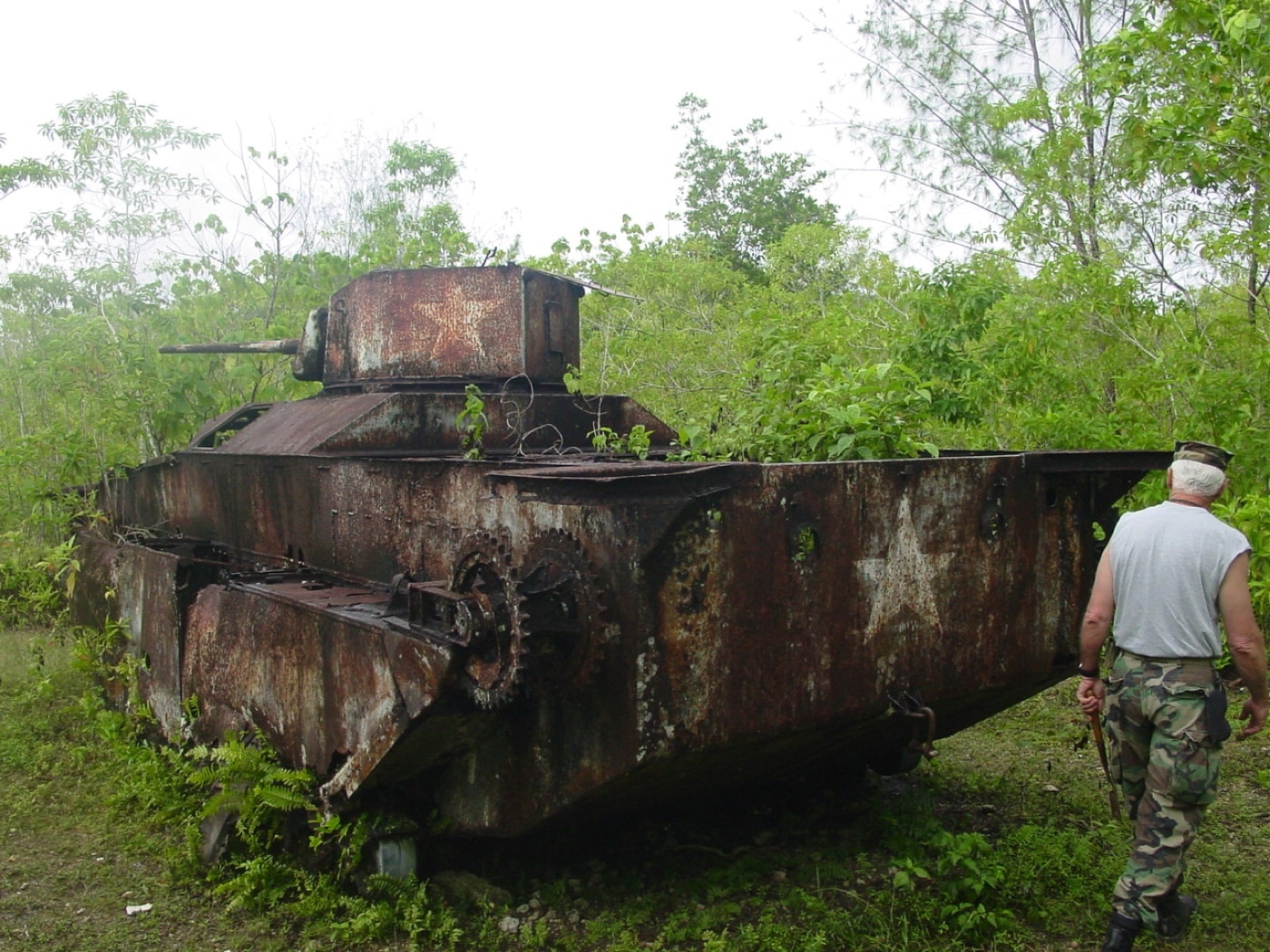
A relatively intact LVT-2 from the 1st Amphibian Tractor Battalion that was either crippled or abandoned on the perimeter of the Japanese airfield on Peleliu.
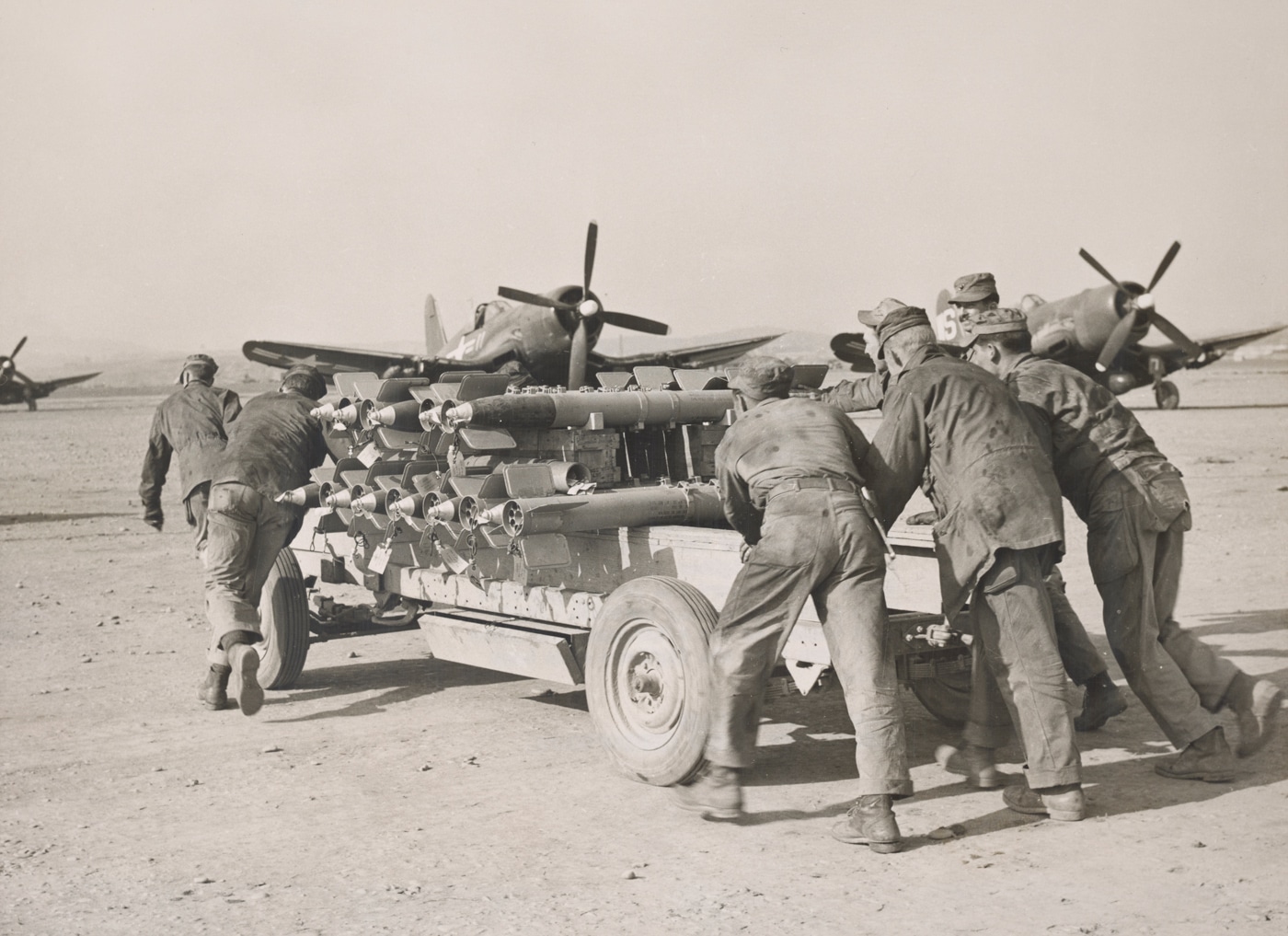
One of the main objectives in the Battle of Peleliu was the seizure of airfields forF4U fightersand other U.S. aircraft. Image: NARA
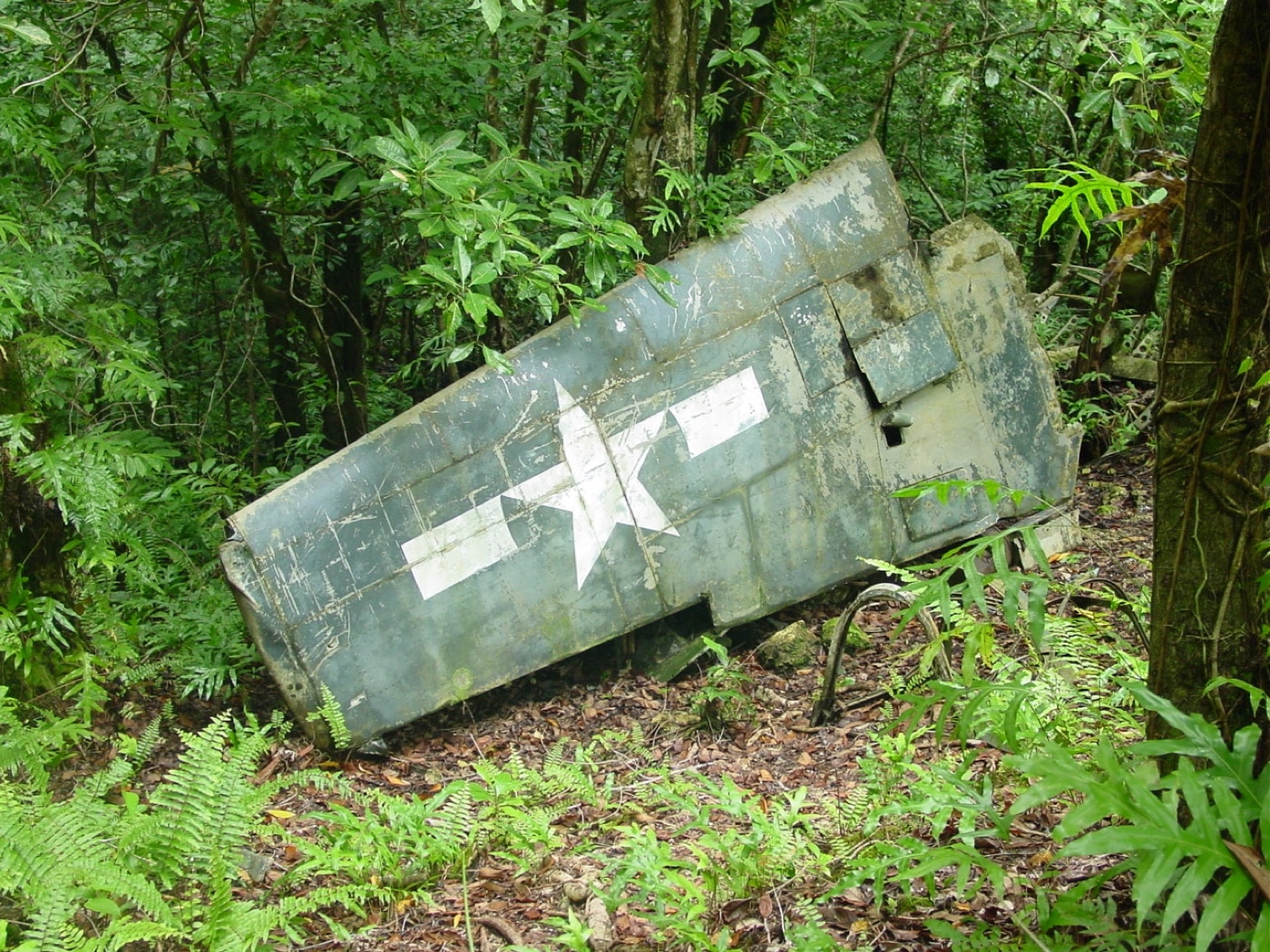
The author located this wing section that is possibly from a U.S. Gruman F4F Wildcat.
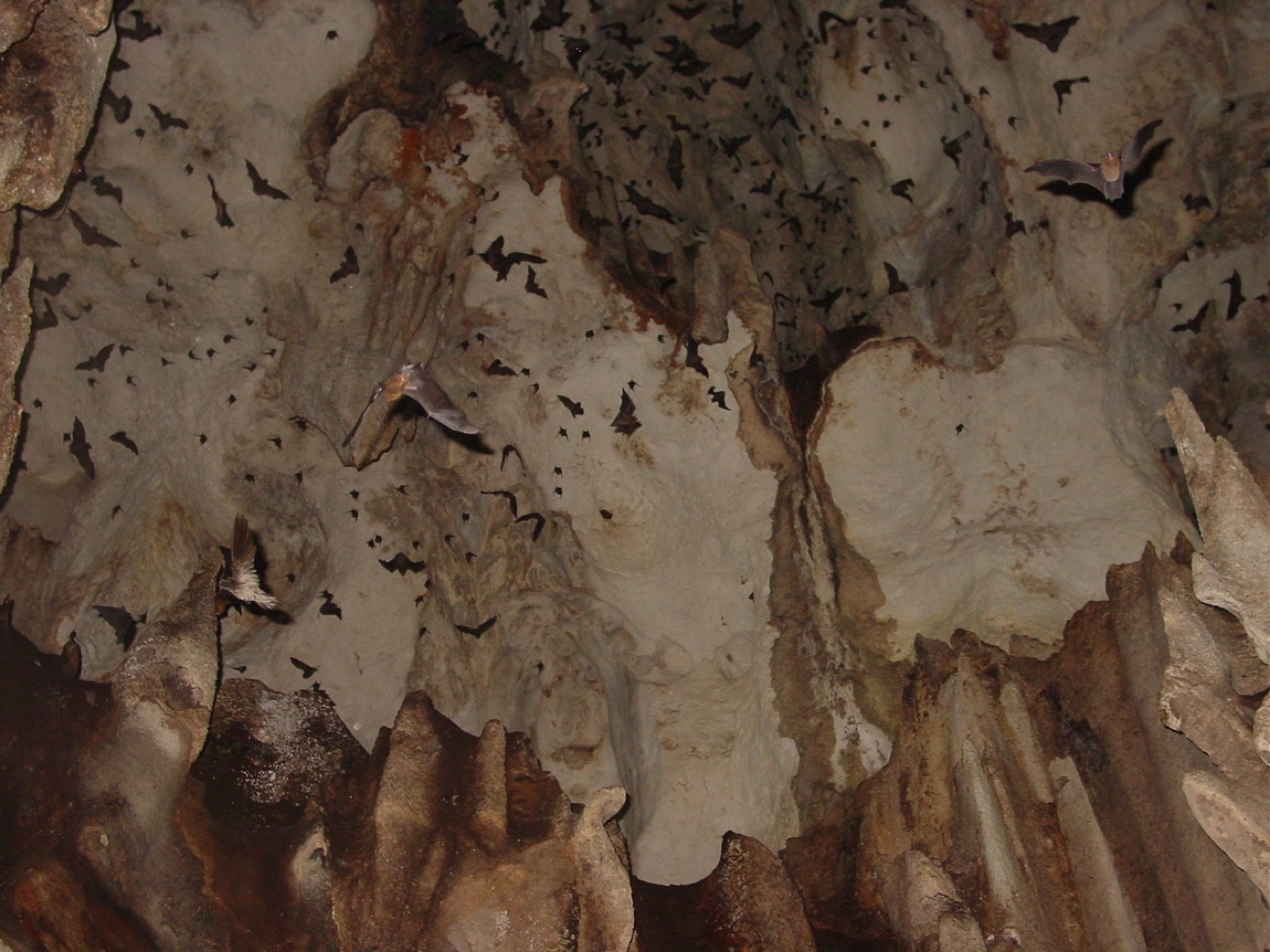
The interior of the Japanese command cave complex remains largely intact. It is now home to hundreds of fruit bats.
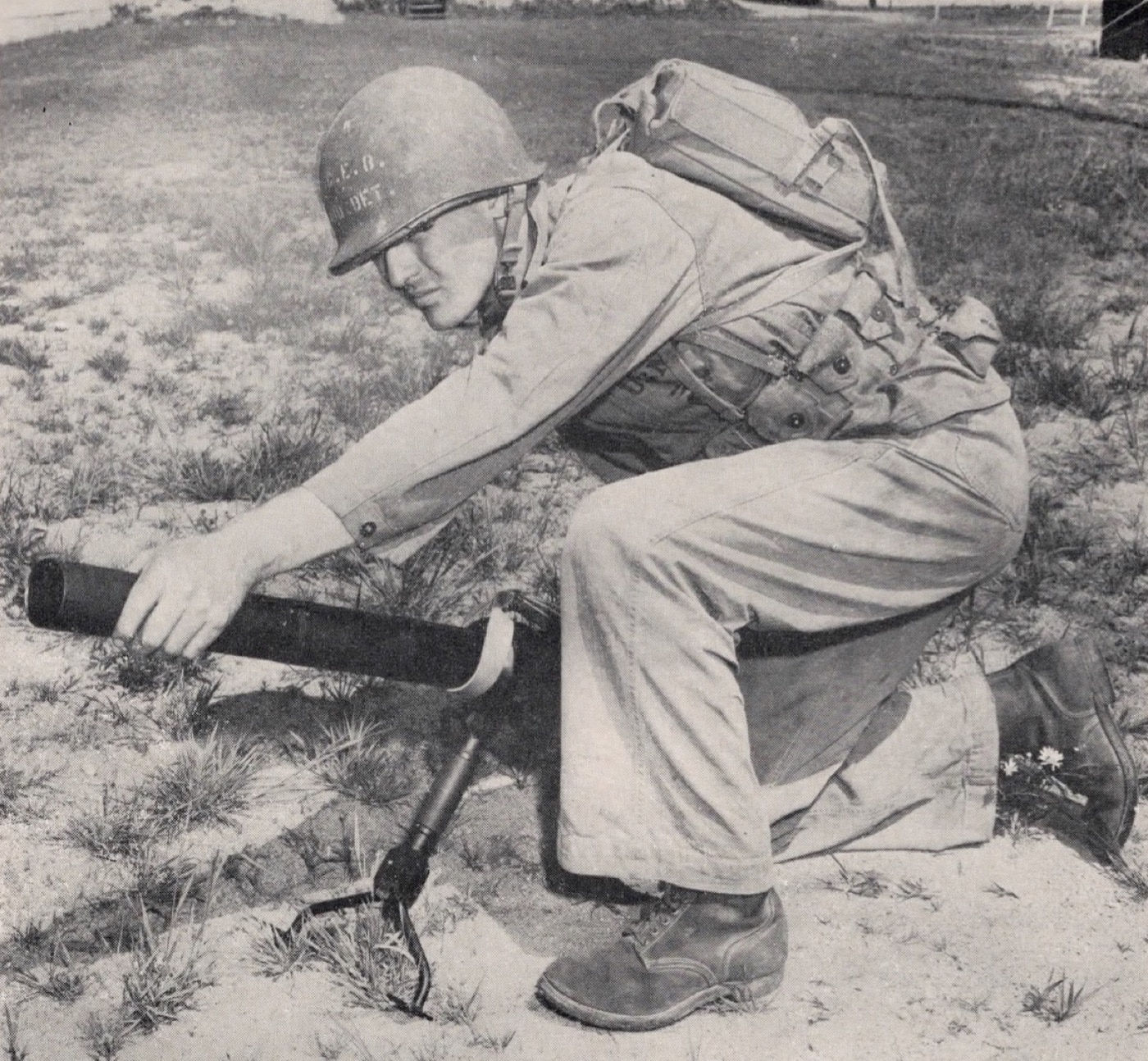
A U.S. Marine trains with a T-20 shoulder mortar. Roughly 100 of these weapons were issued to Marine units for the Peleliu invasion. Image: U.S. Bureau of Ordnance

The T-20 Garret was a 60mm, shoulder-fired mortar. Spring-powered, the weapon is said to have broken Marine collarbones during normal use. Image: U.S. Bureau of Ordnance
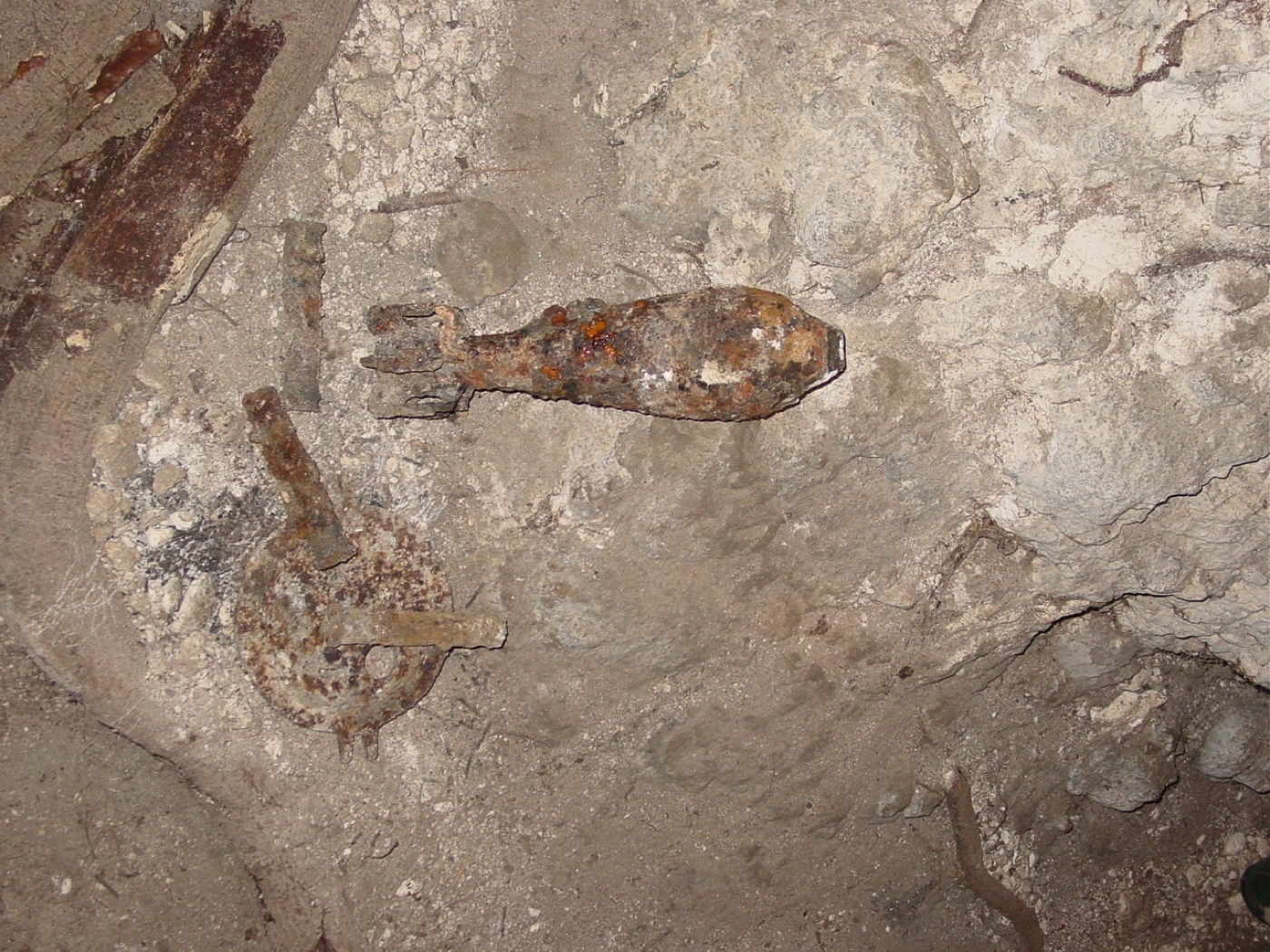
Japanese mortar round found by the author in one of Peleliu’s cave complexes. Nearby was a case of fuses. Each fuse ignited when it was tossed against a rock.
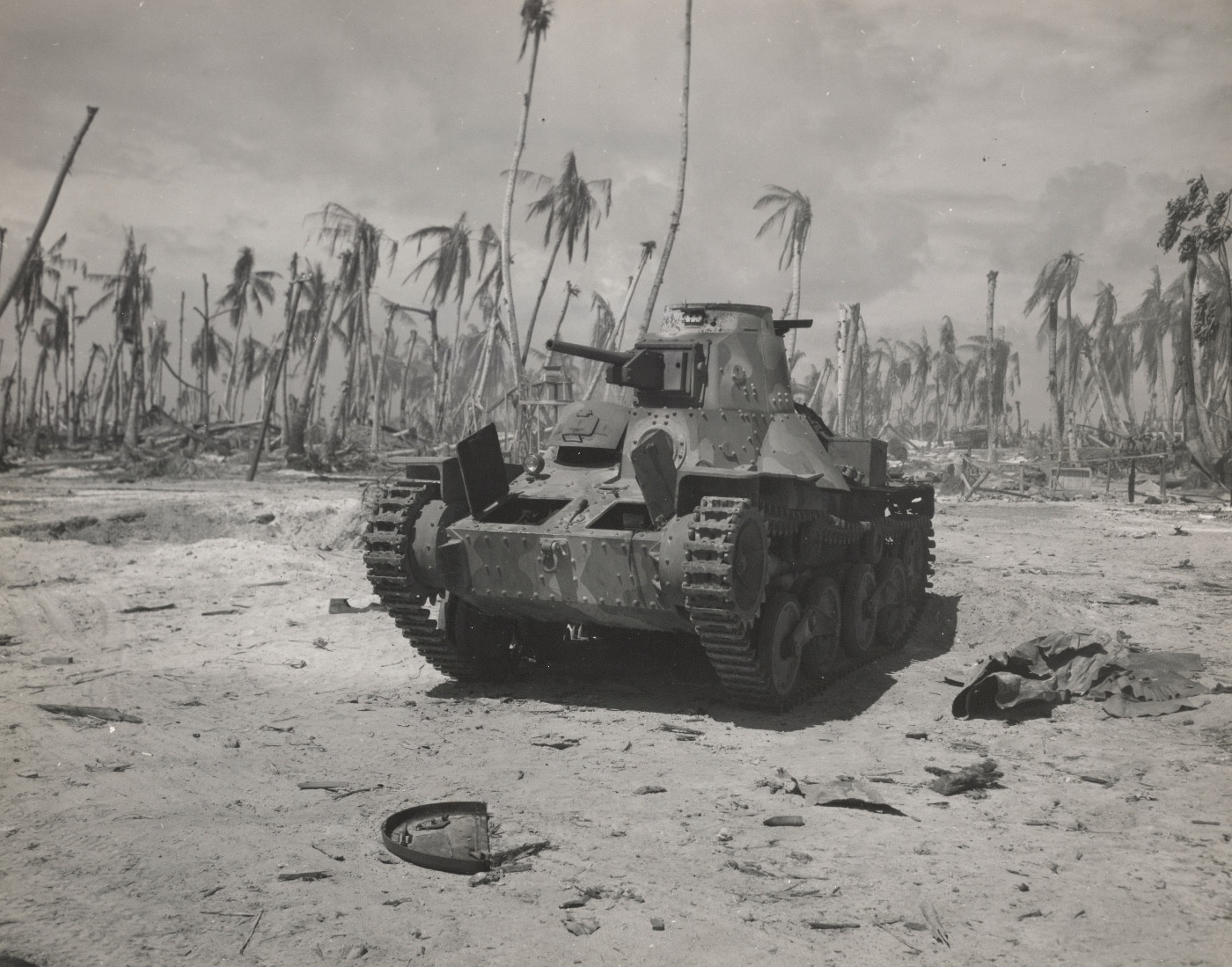
Shown above is a damaged Japanese Type 95 Ha-Go tank. In island fighting, lightweight tanks offered advantages over heavy tanks more frequently seen in the European Theater. Image: NARA
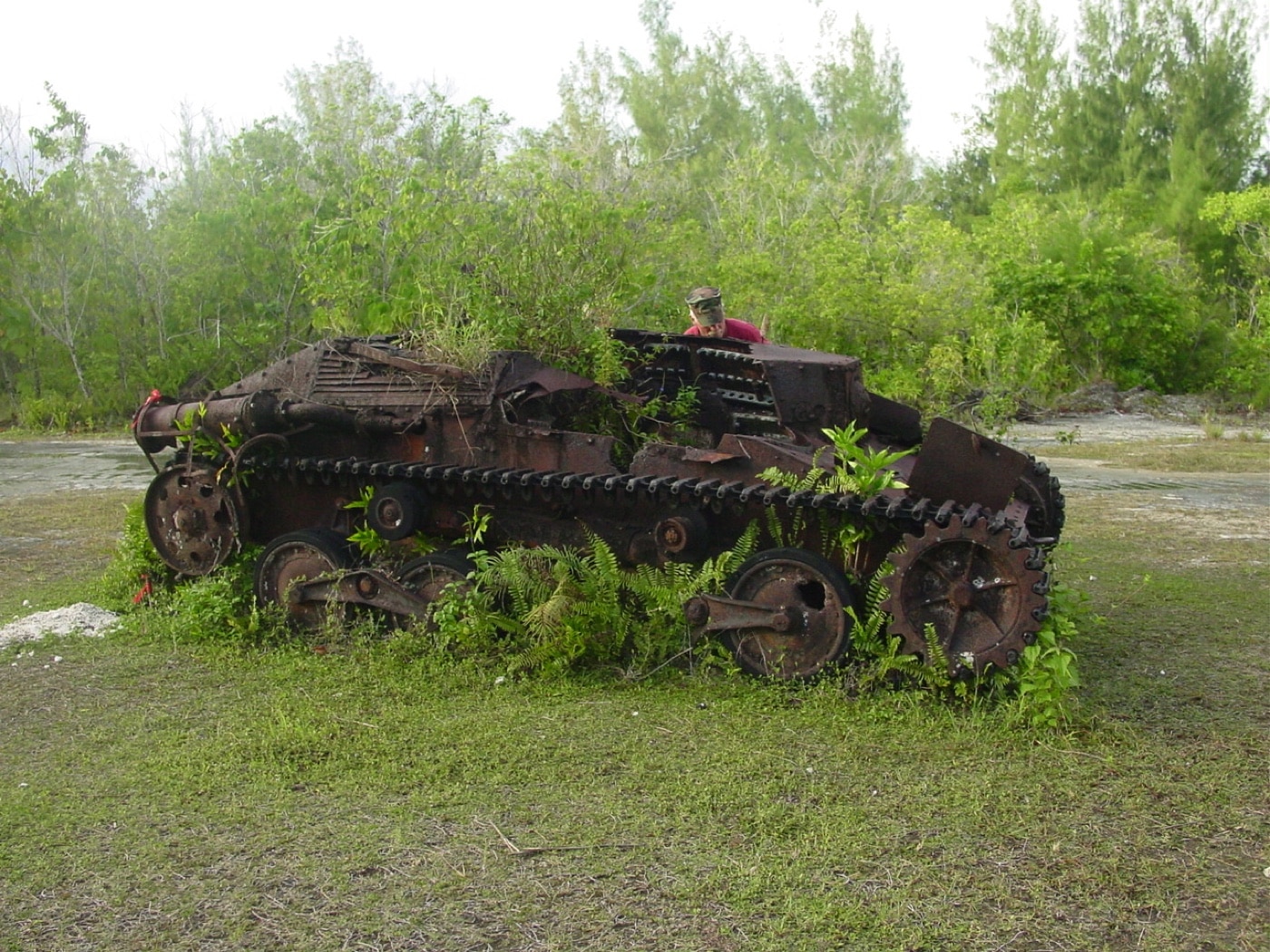
A Japanese Type 95 Ha-Go light tank sits in a clearing on Peleliu. This vehicle was one of 20 or so that counterattacked the landing force on D-Day. There was still 37mm ammo in the ready racks.
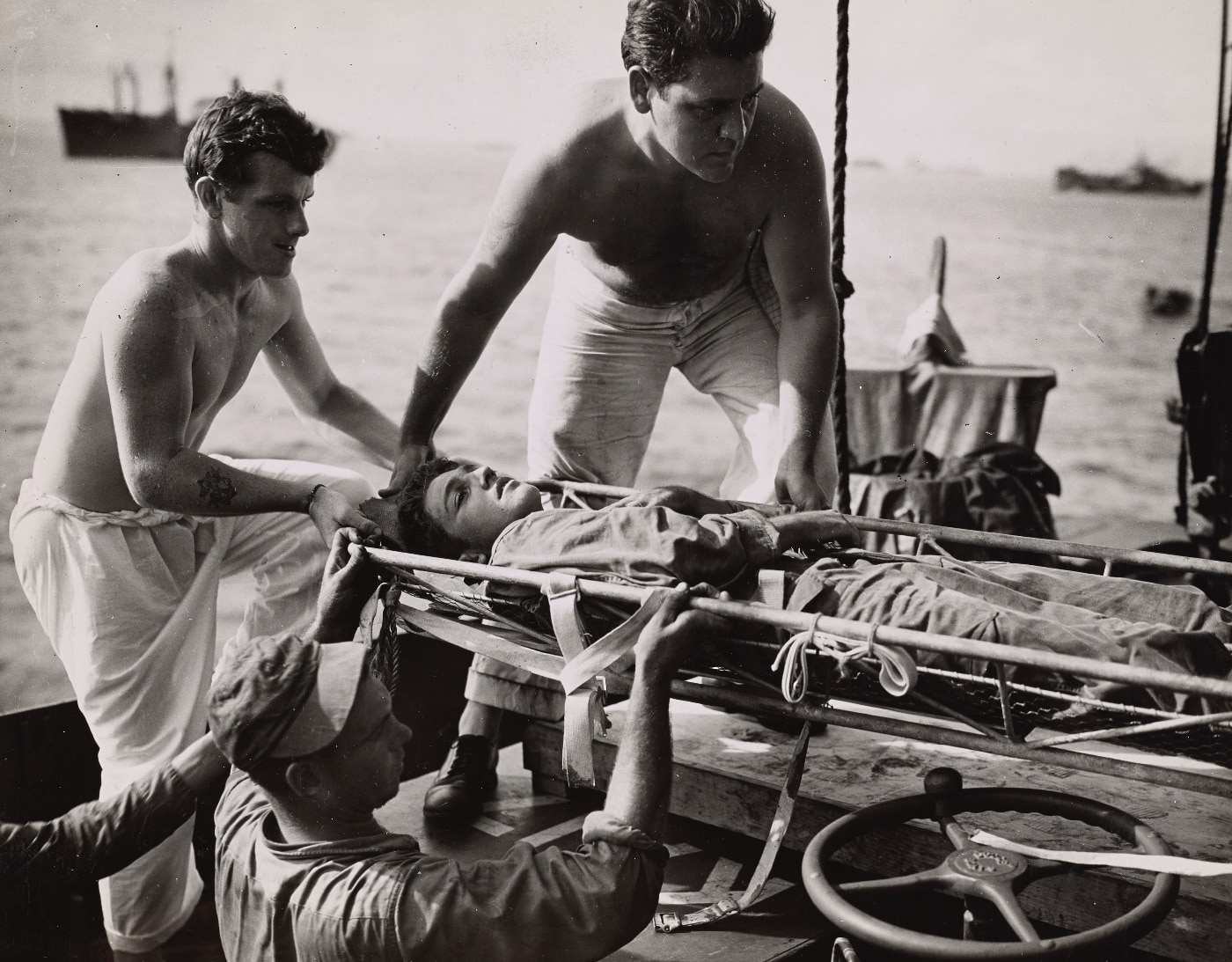
A wounded Marine, who fell in the furious fighting of Peleliu, is carefully lifted aboard a transport after he had been evacuated from the bloody beaches in a landing barge. Image: NARA
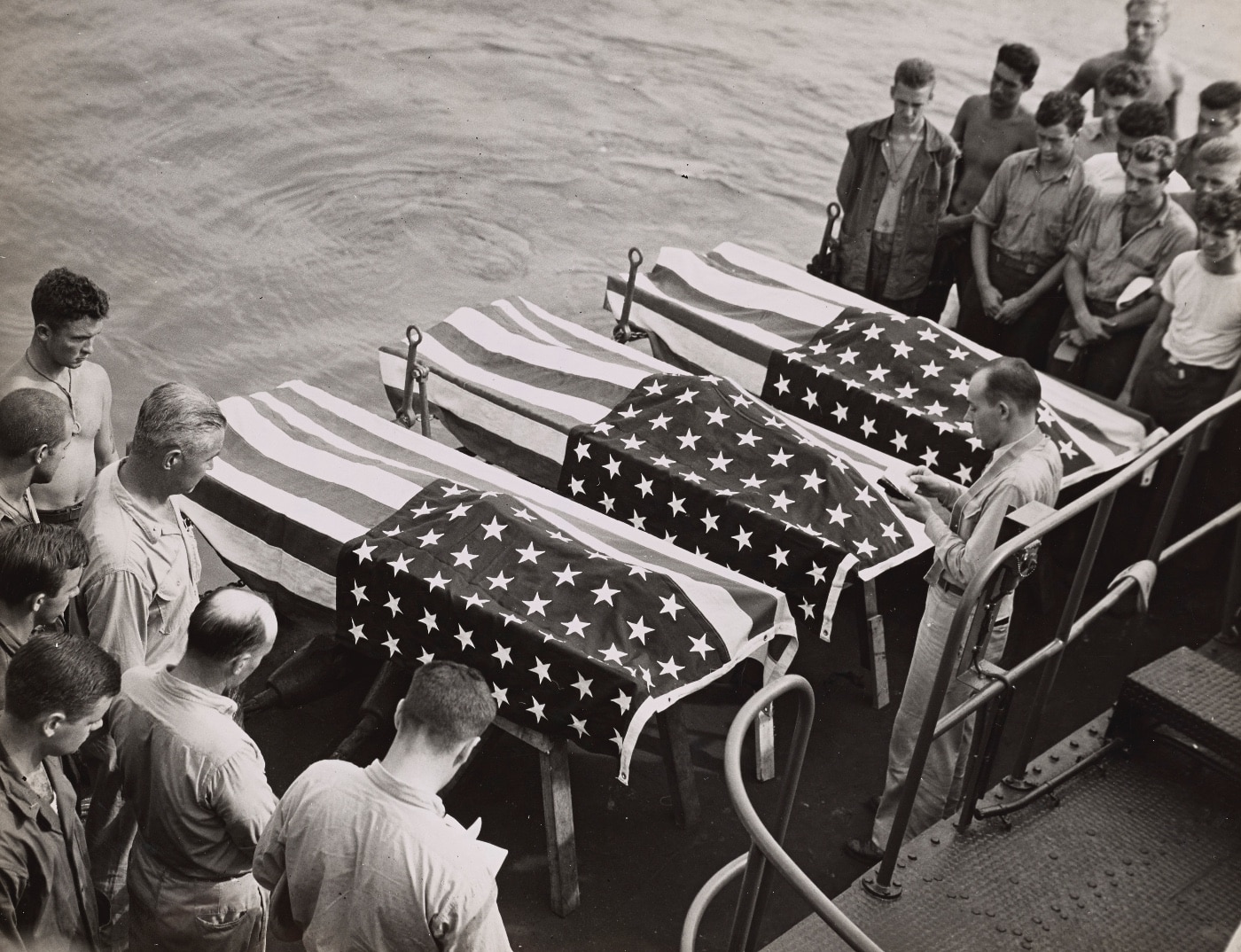
Three Americans are given to the sea in funeral services aboard a Coast Guard-manned invasion transport. These heroes died in the fierce fighting for Peleliu Island. Image: U.S. Coast Guard
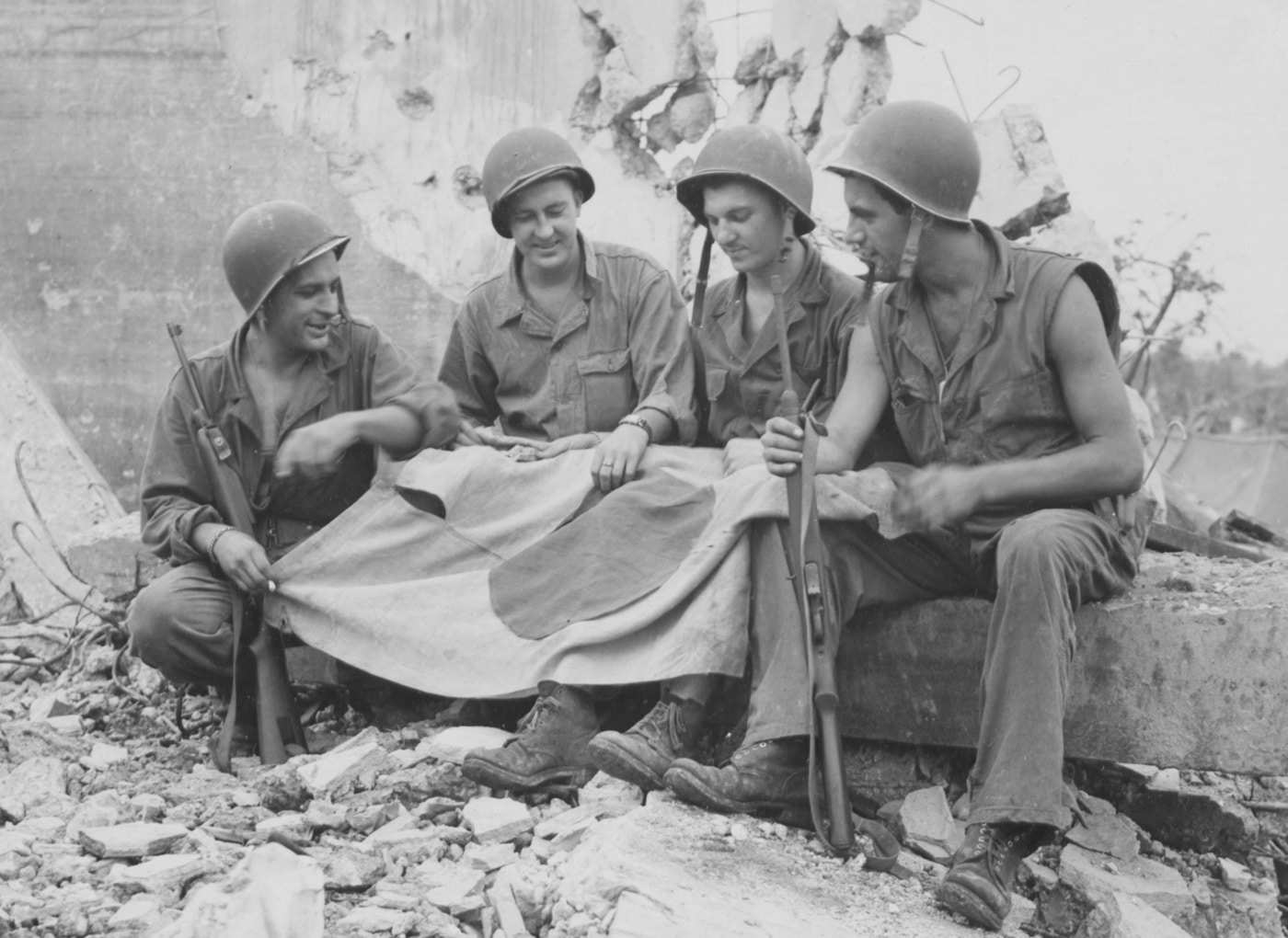
Four Americans display a captured Japanese flag during Operation Stalemate II. The invasion began on September 15 and would run through November. This photo was taken on October 3rd. Image: NARA
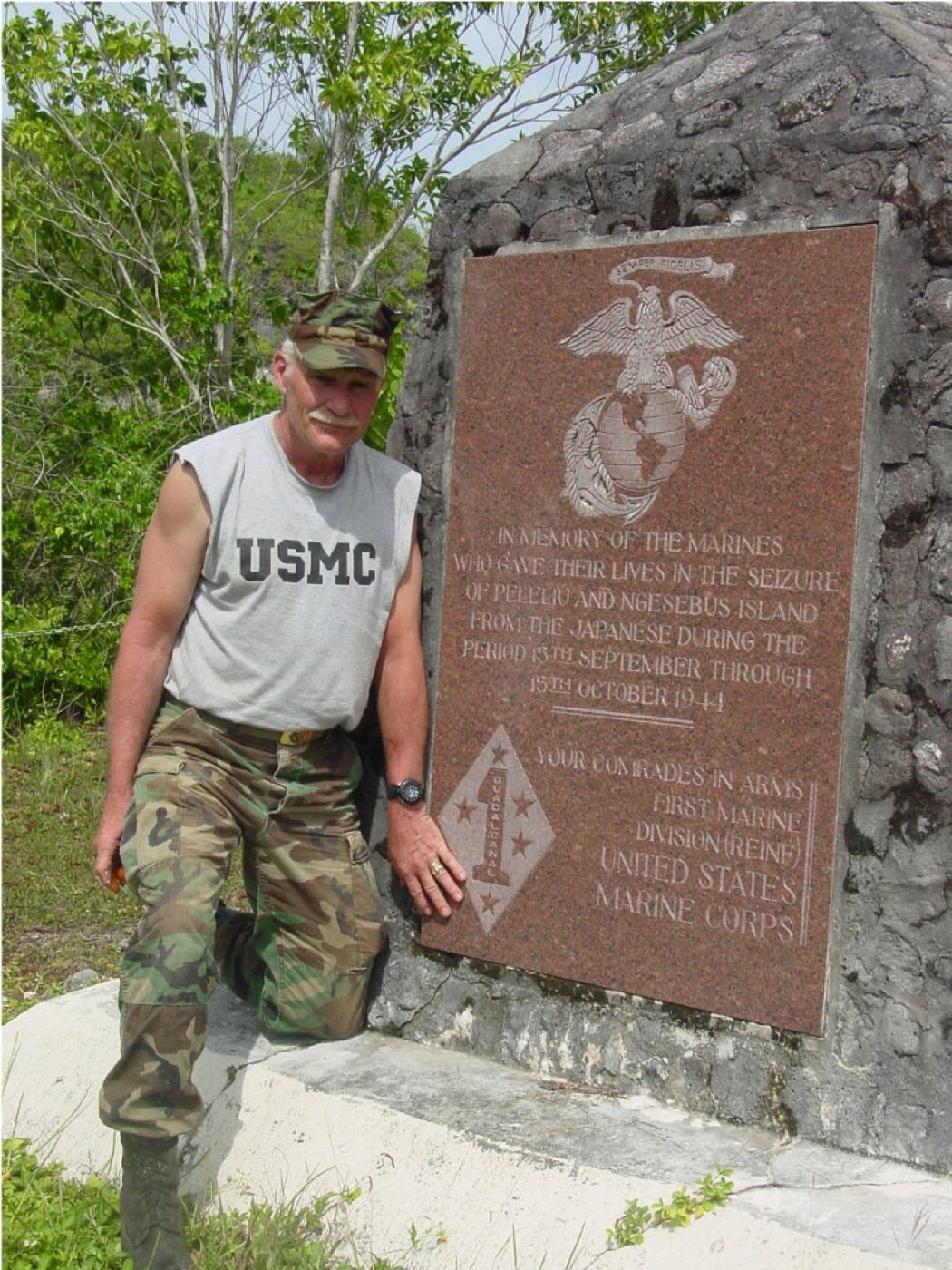
Veterans and families of the 1st Division Marines who fought on Peleliu erected this monument in the Five Brothers area of the Umurbrogol massif where so many died in the fight for Peleliu.




